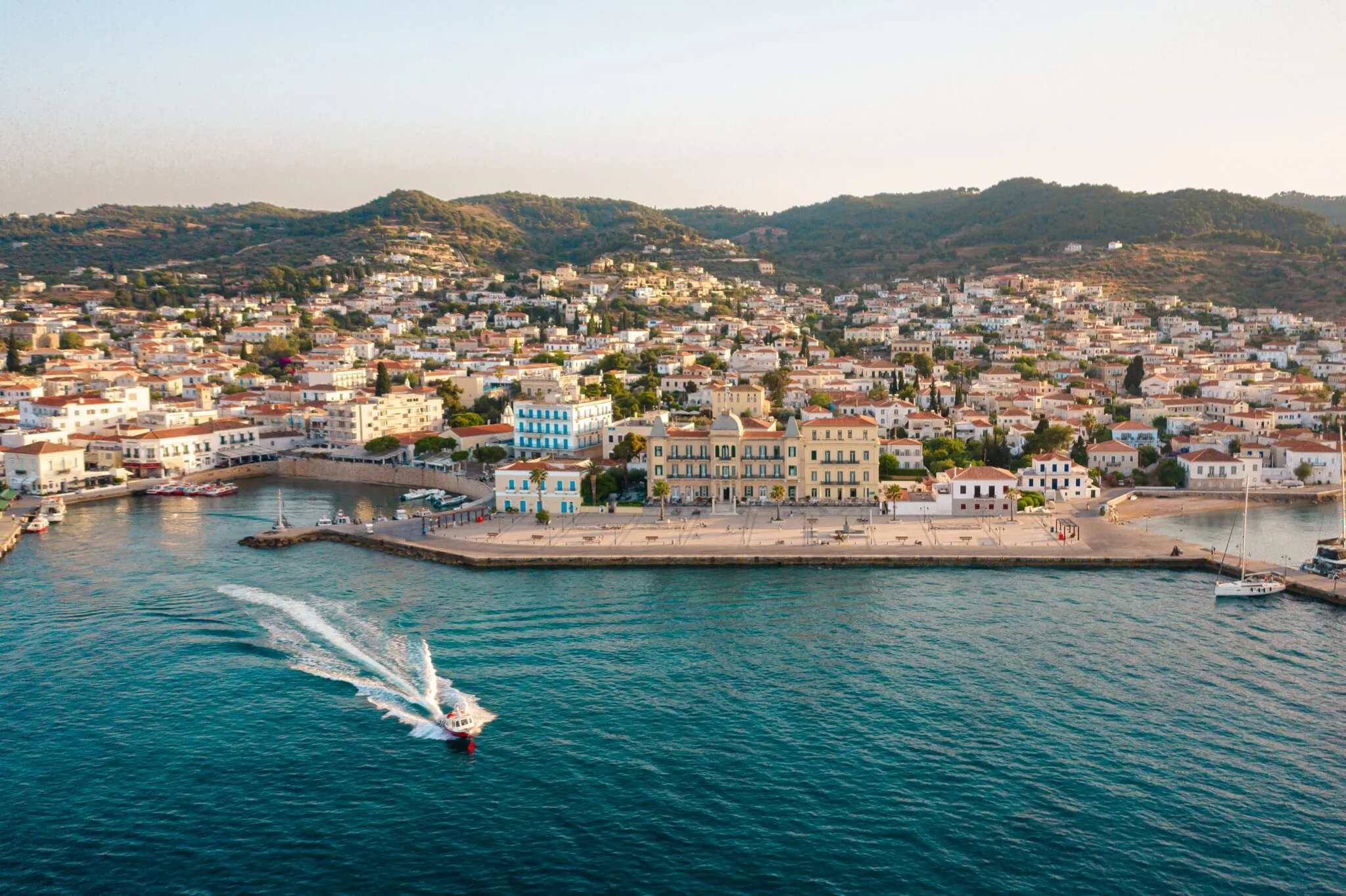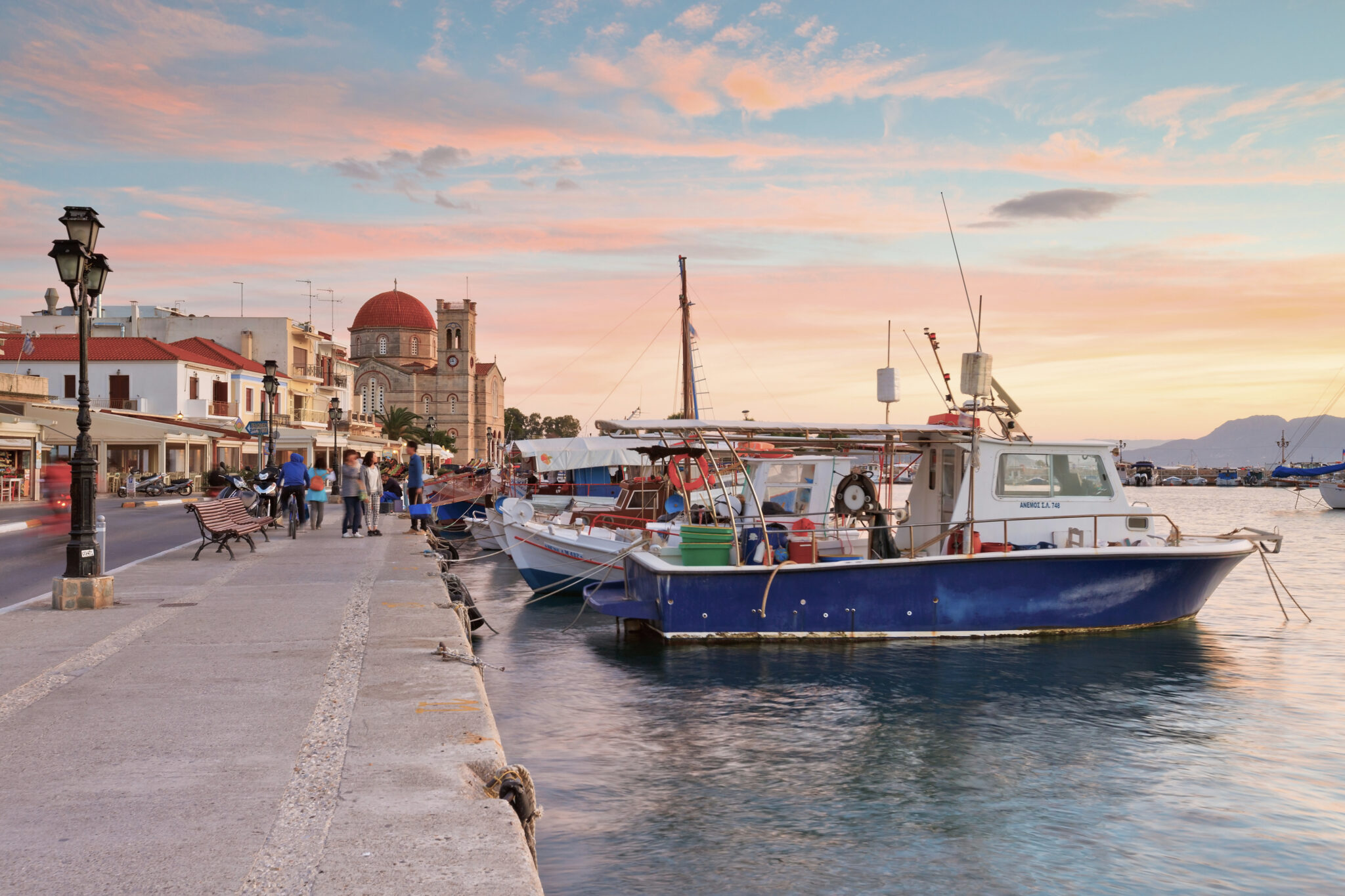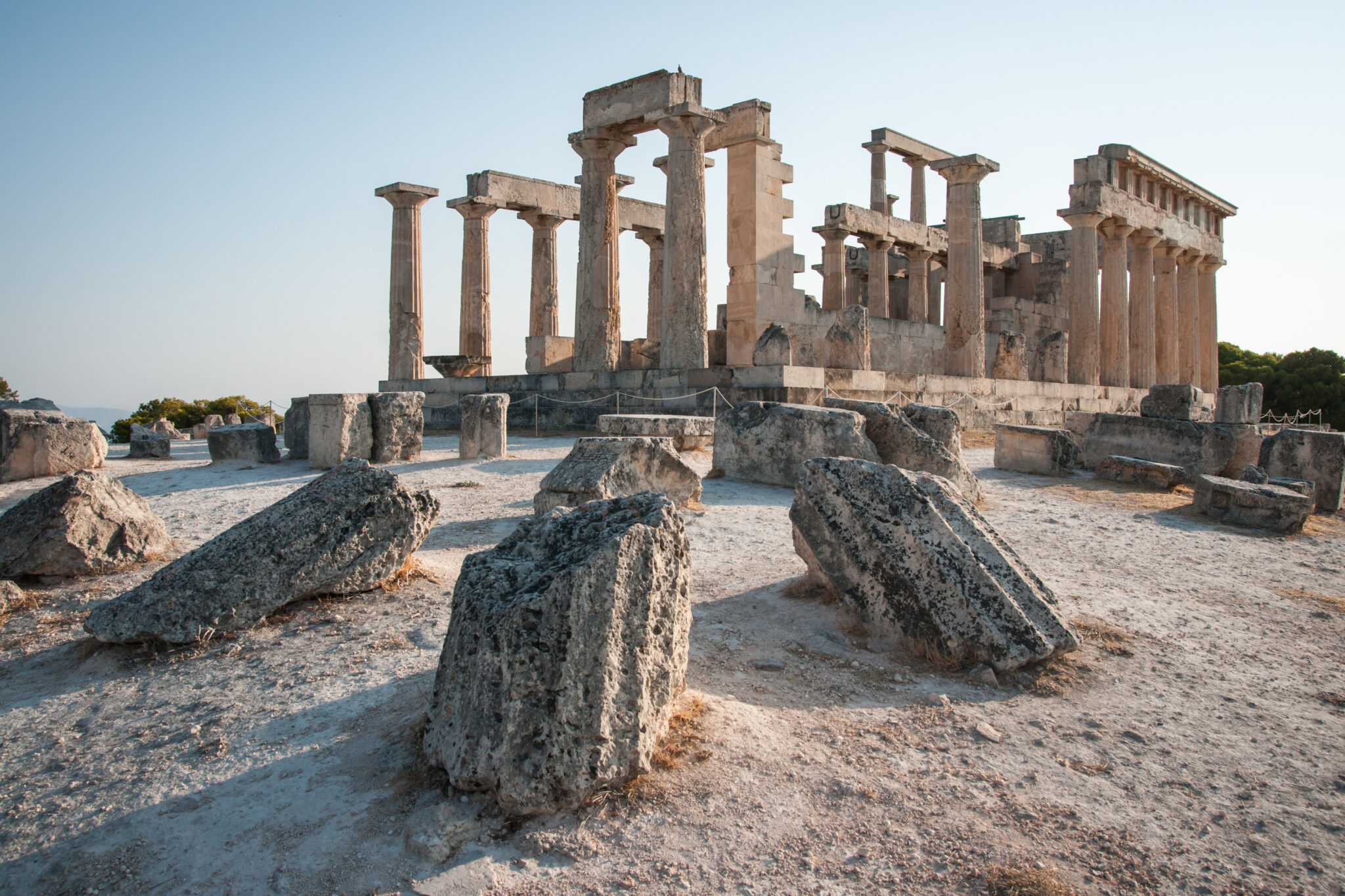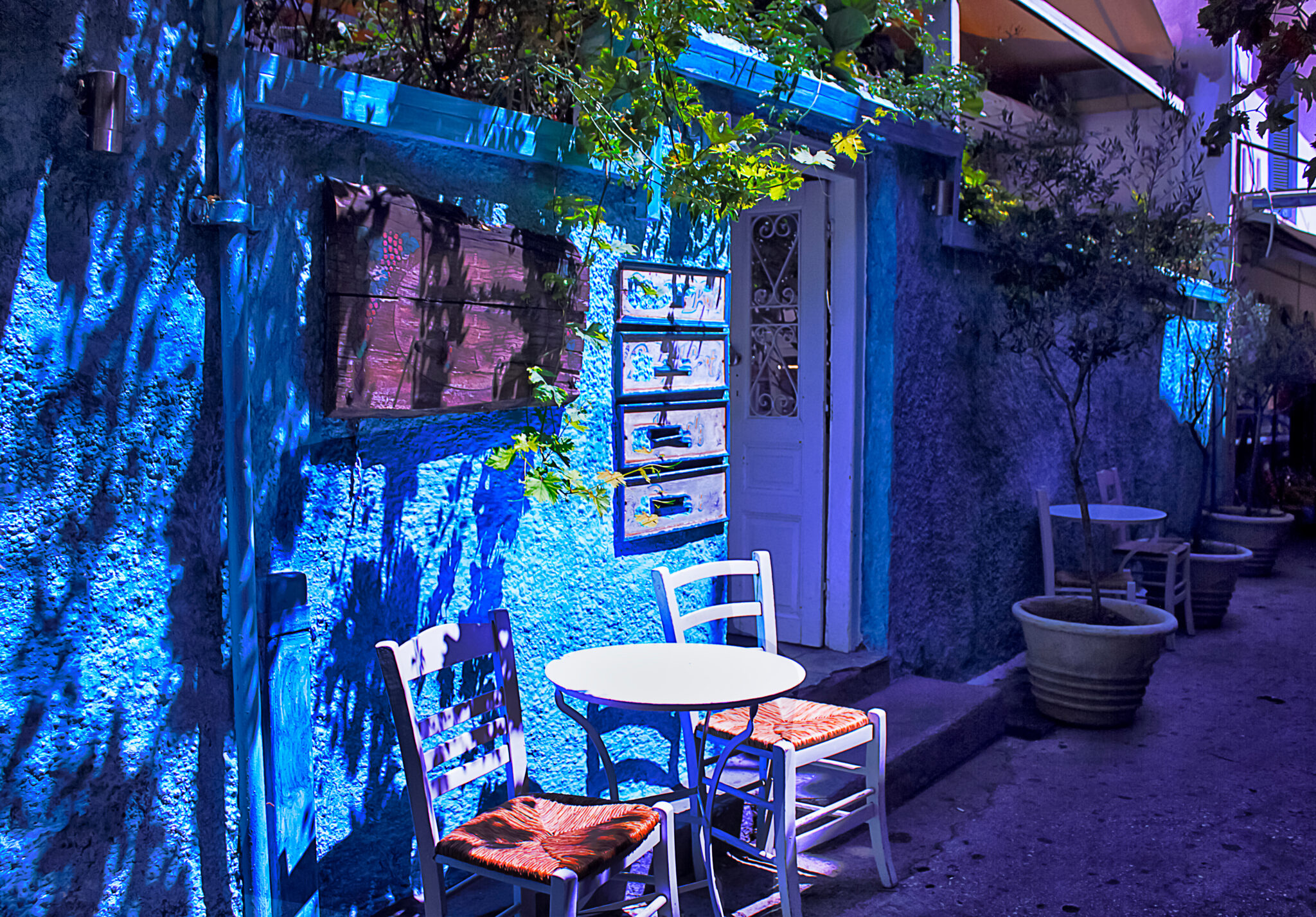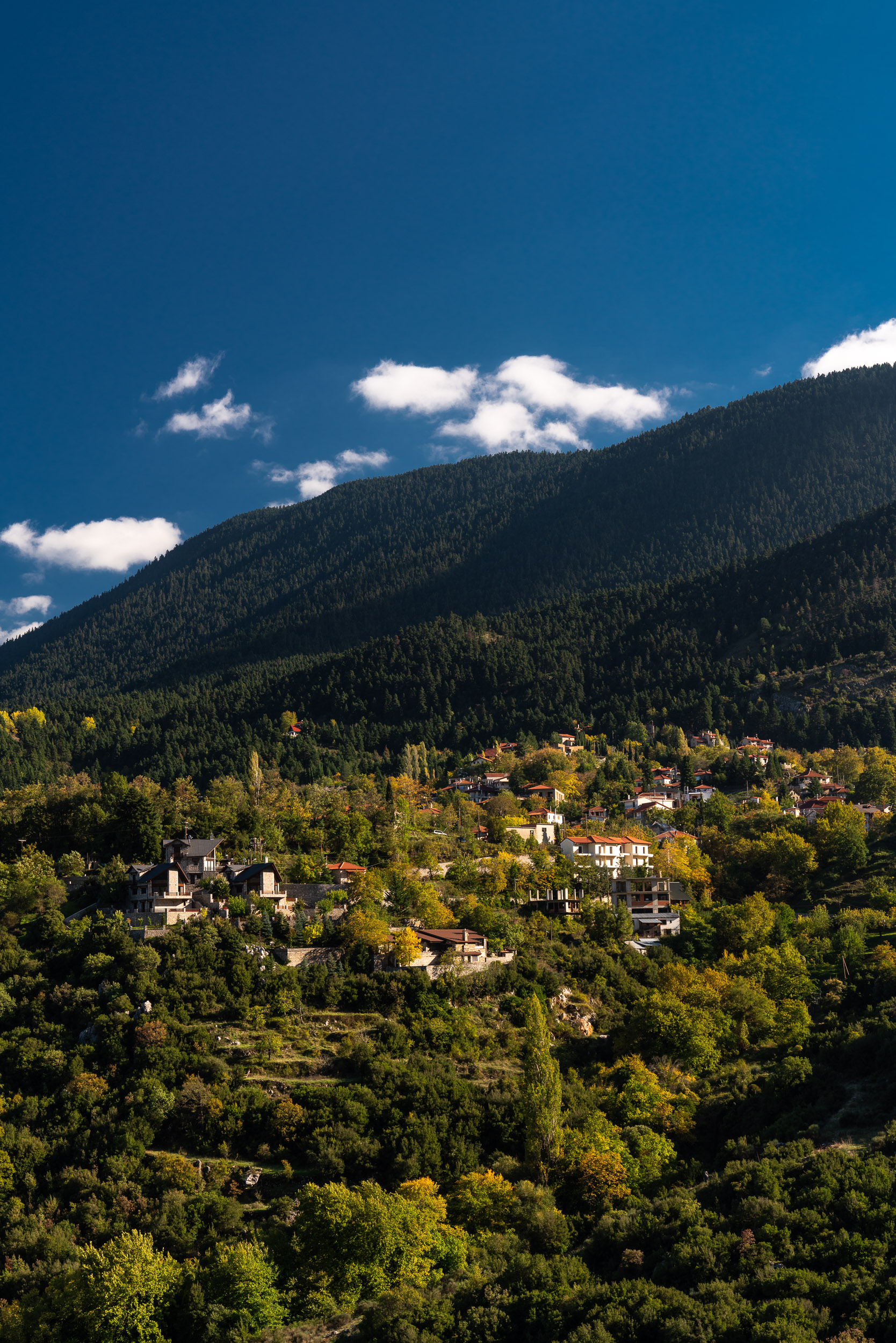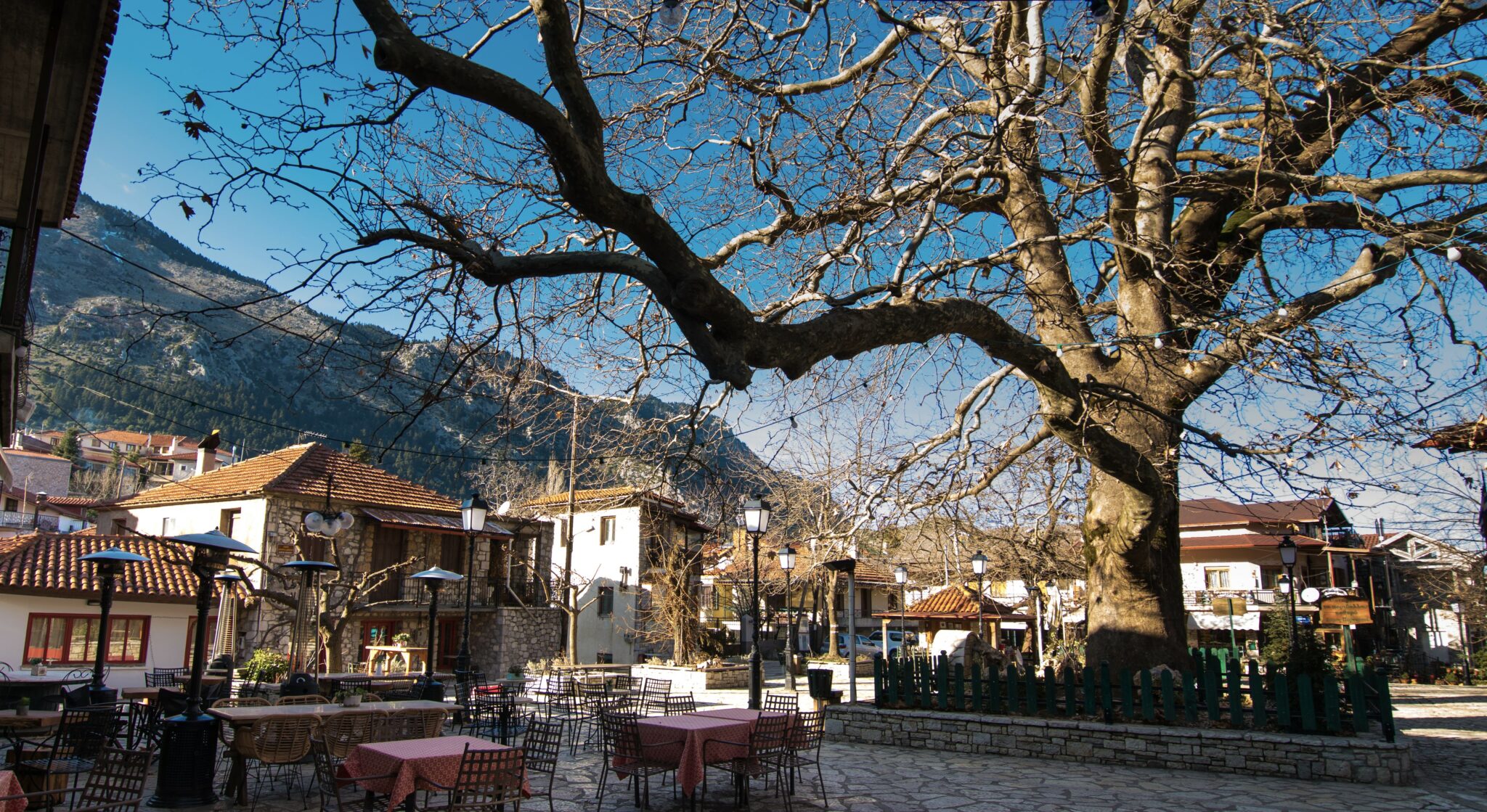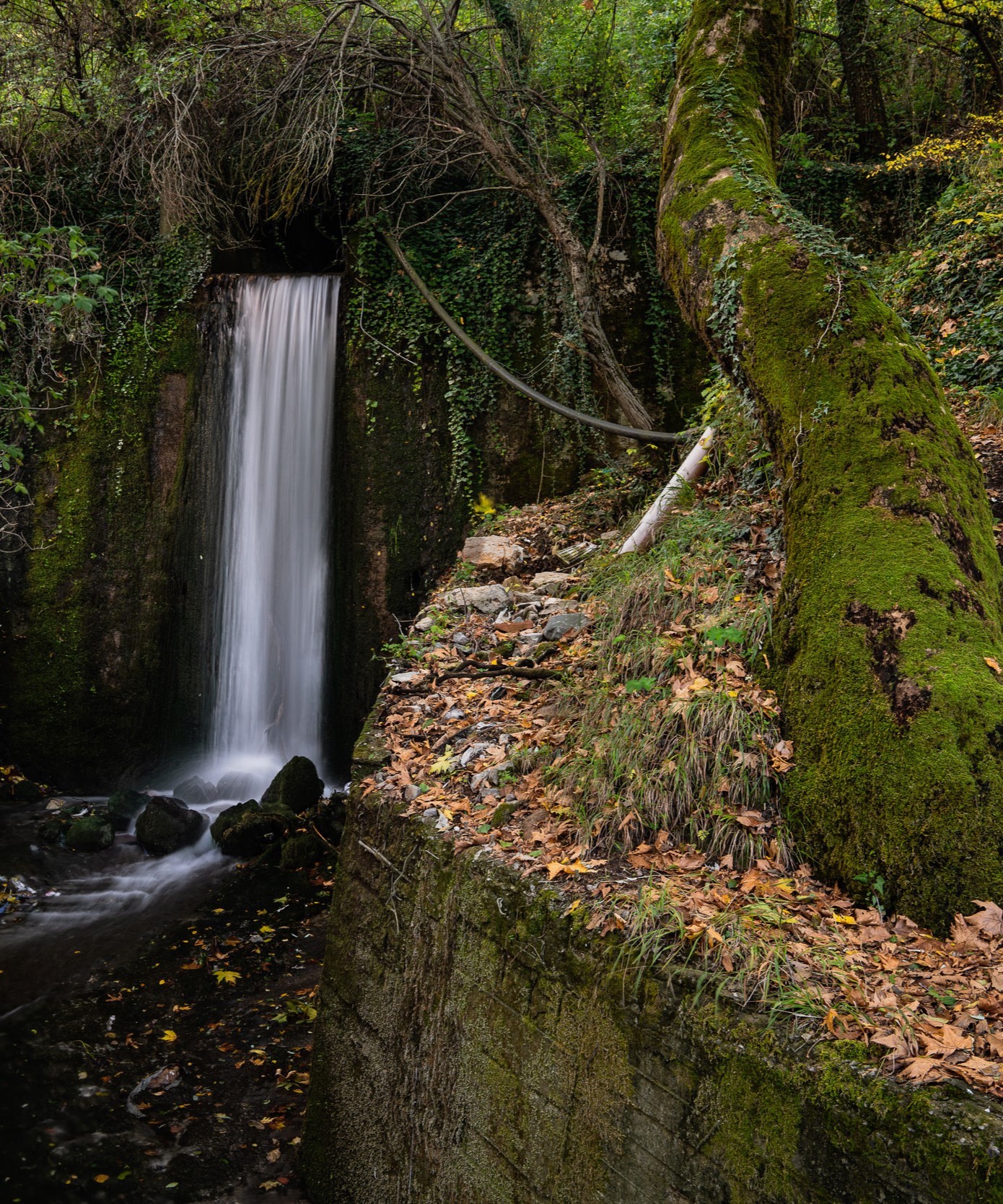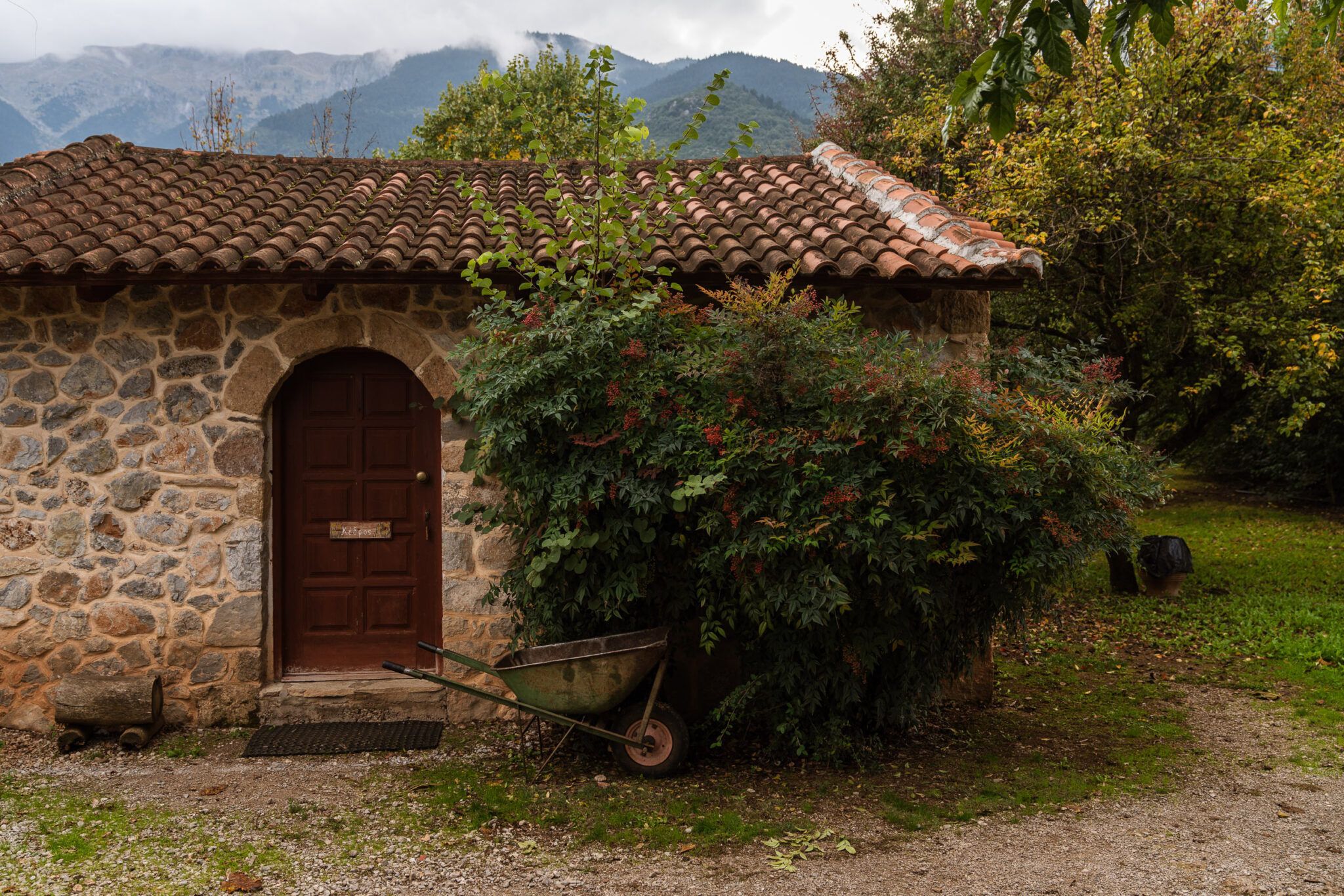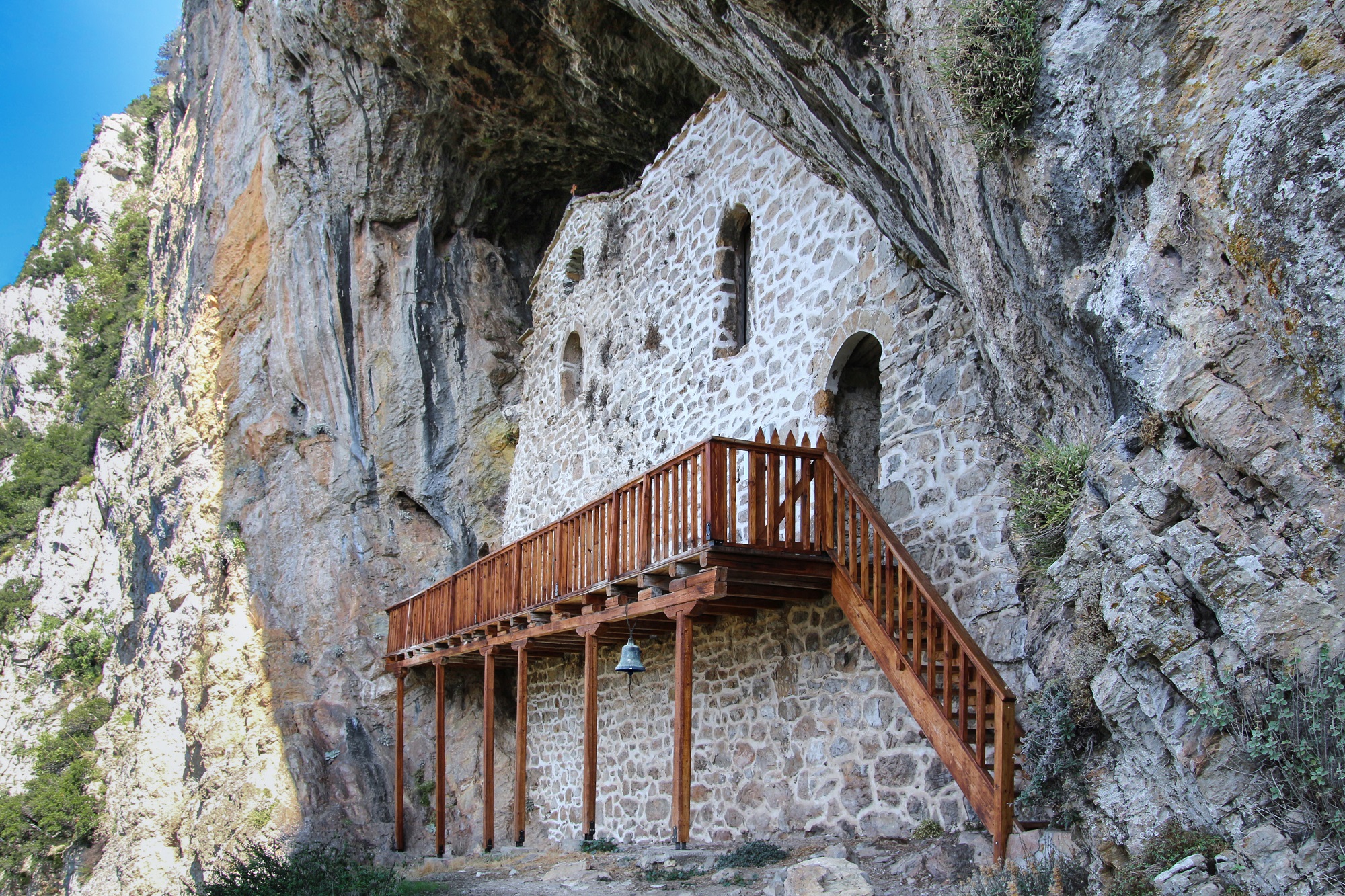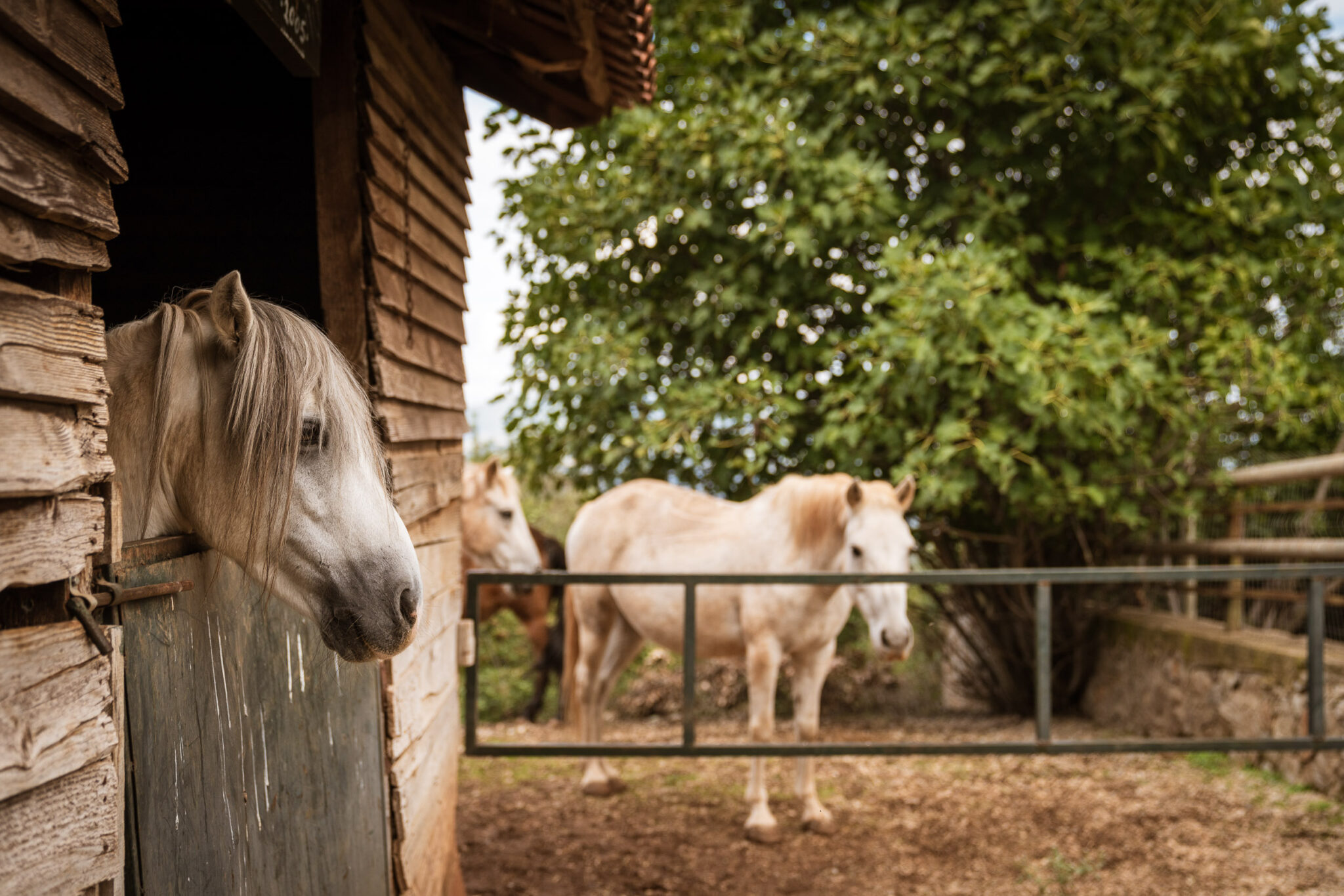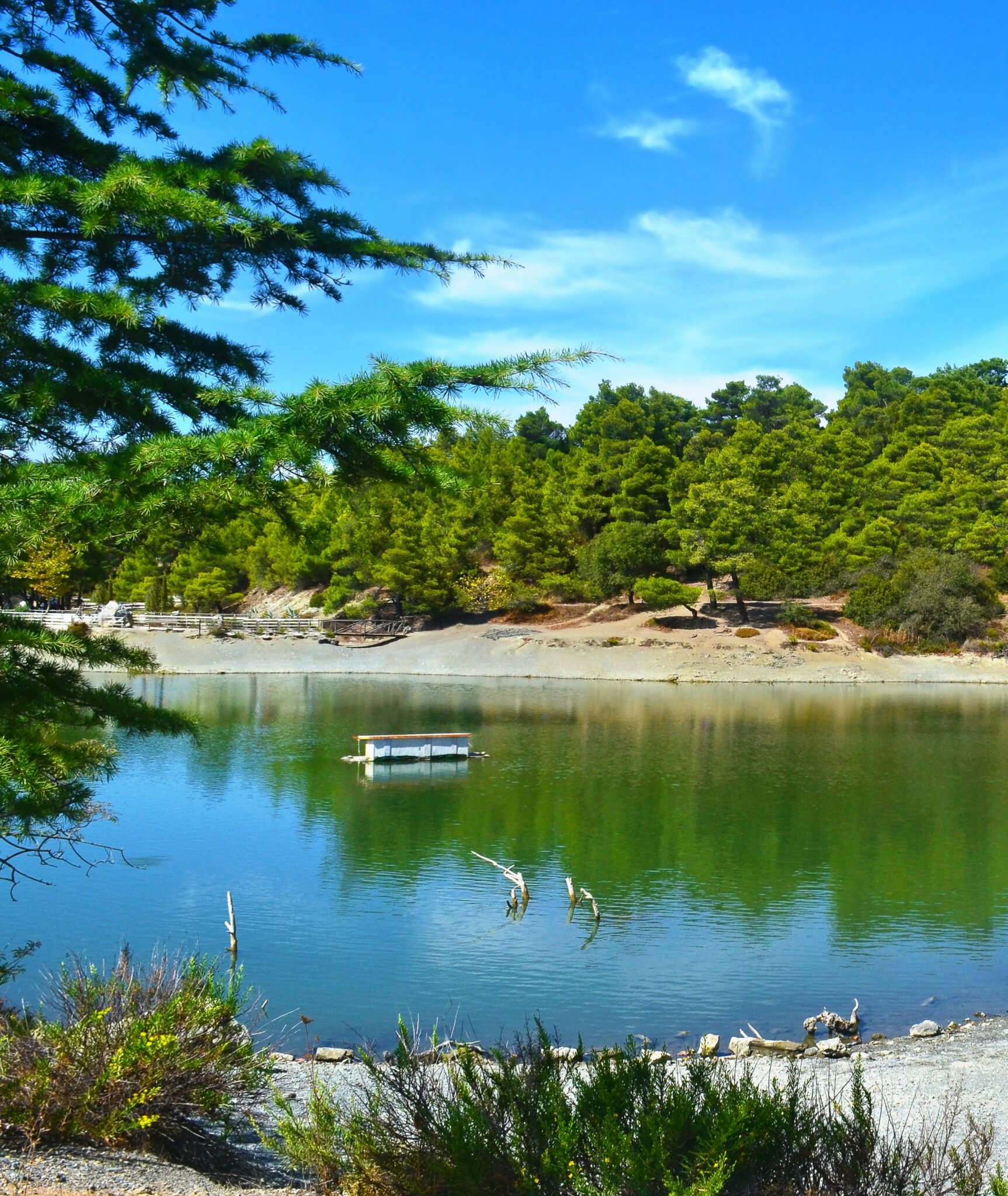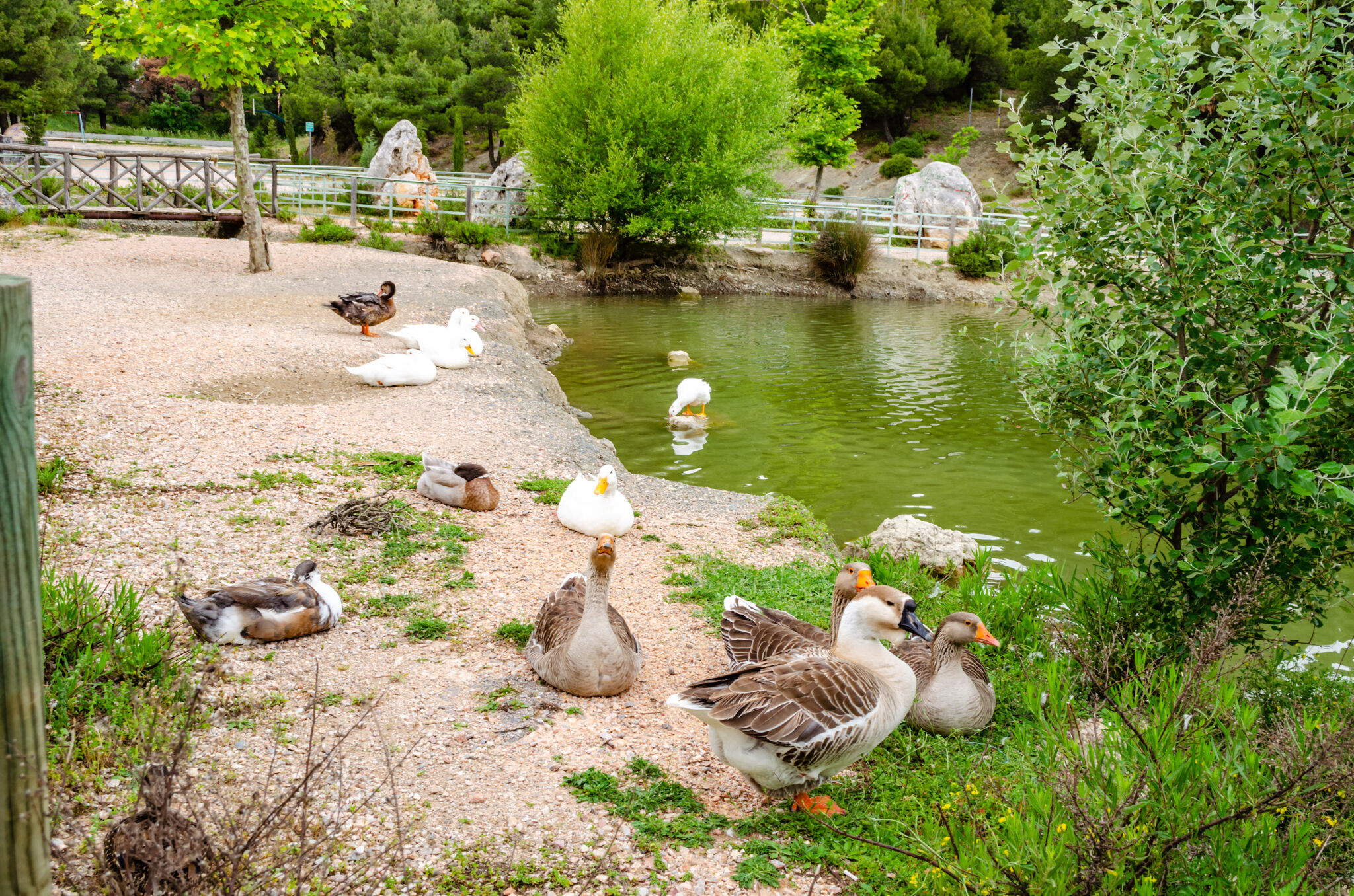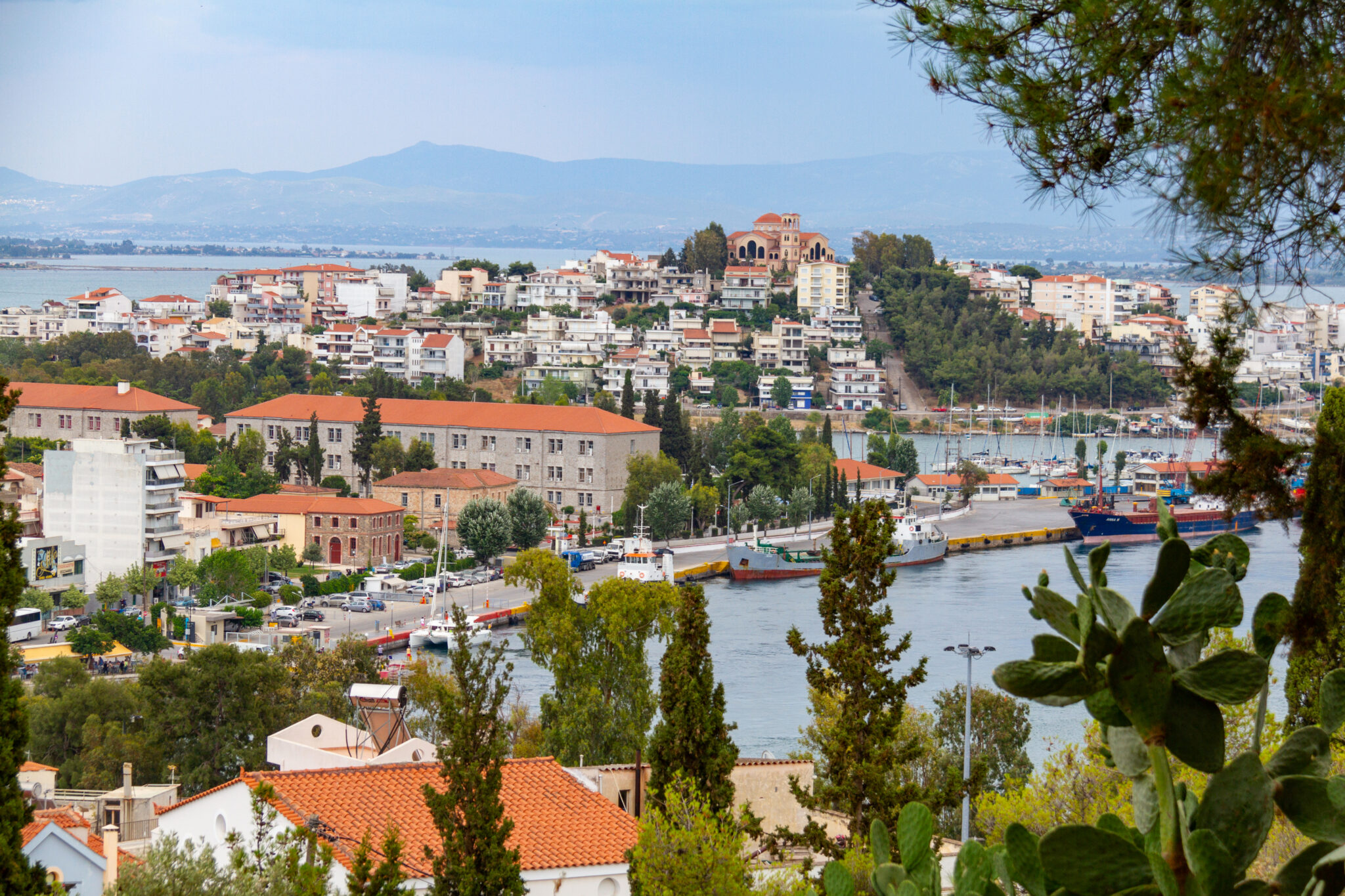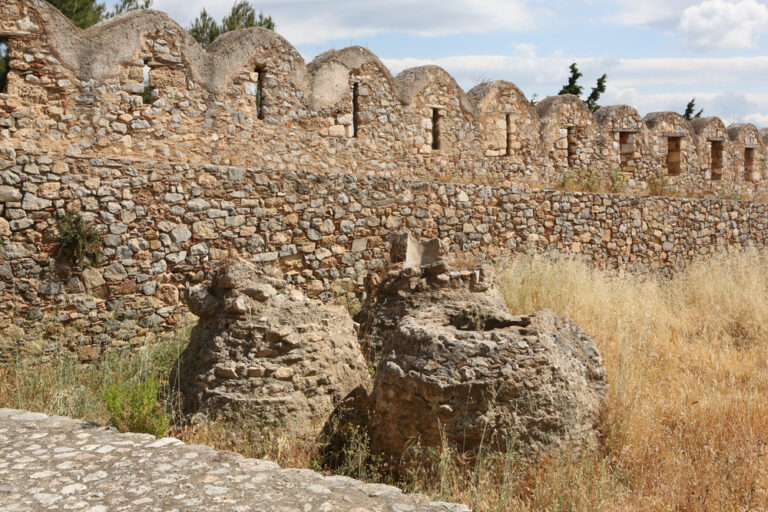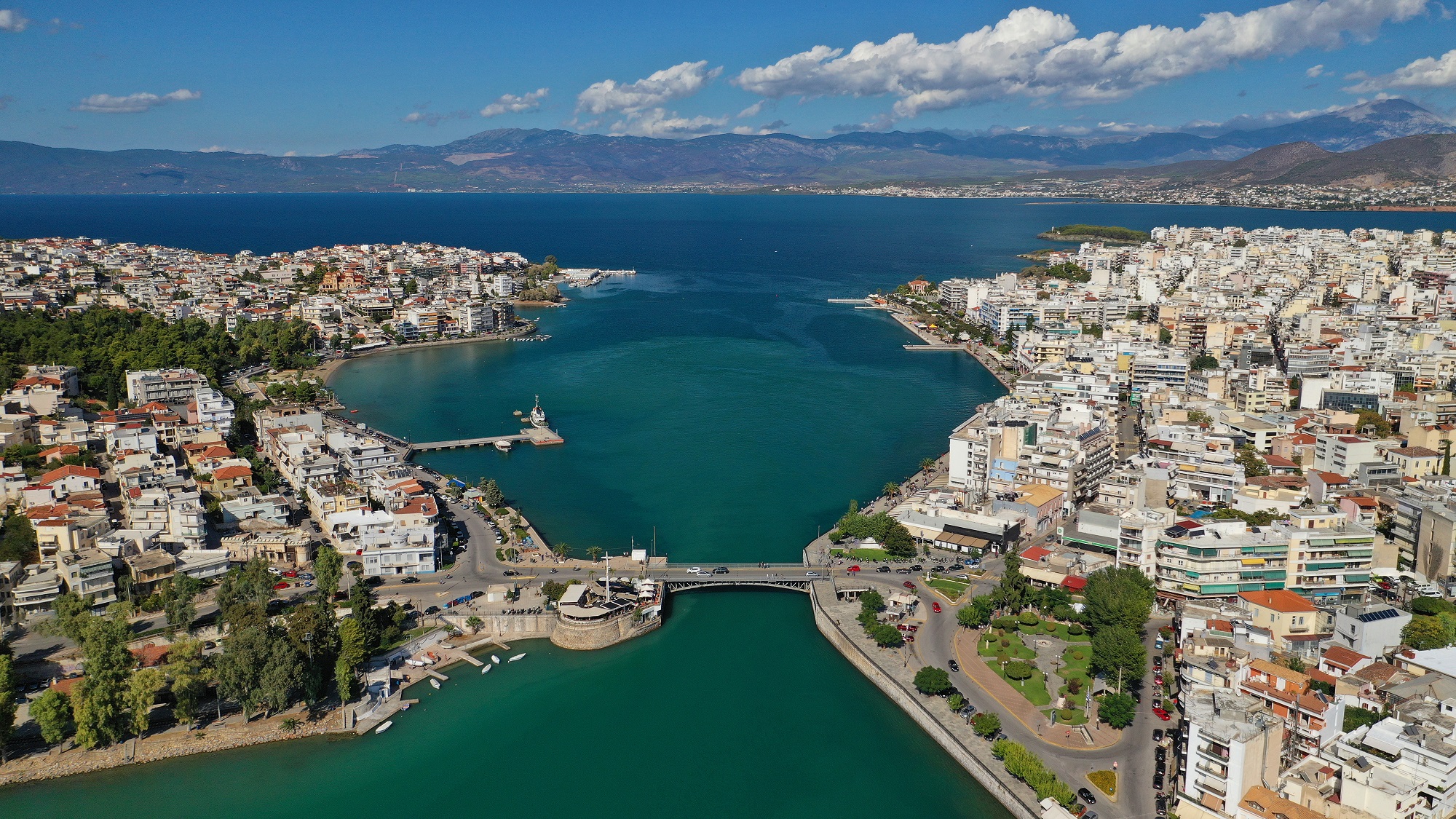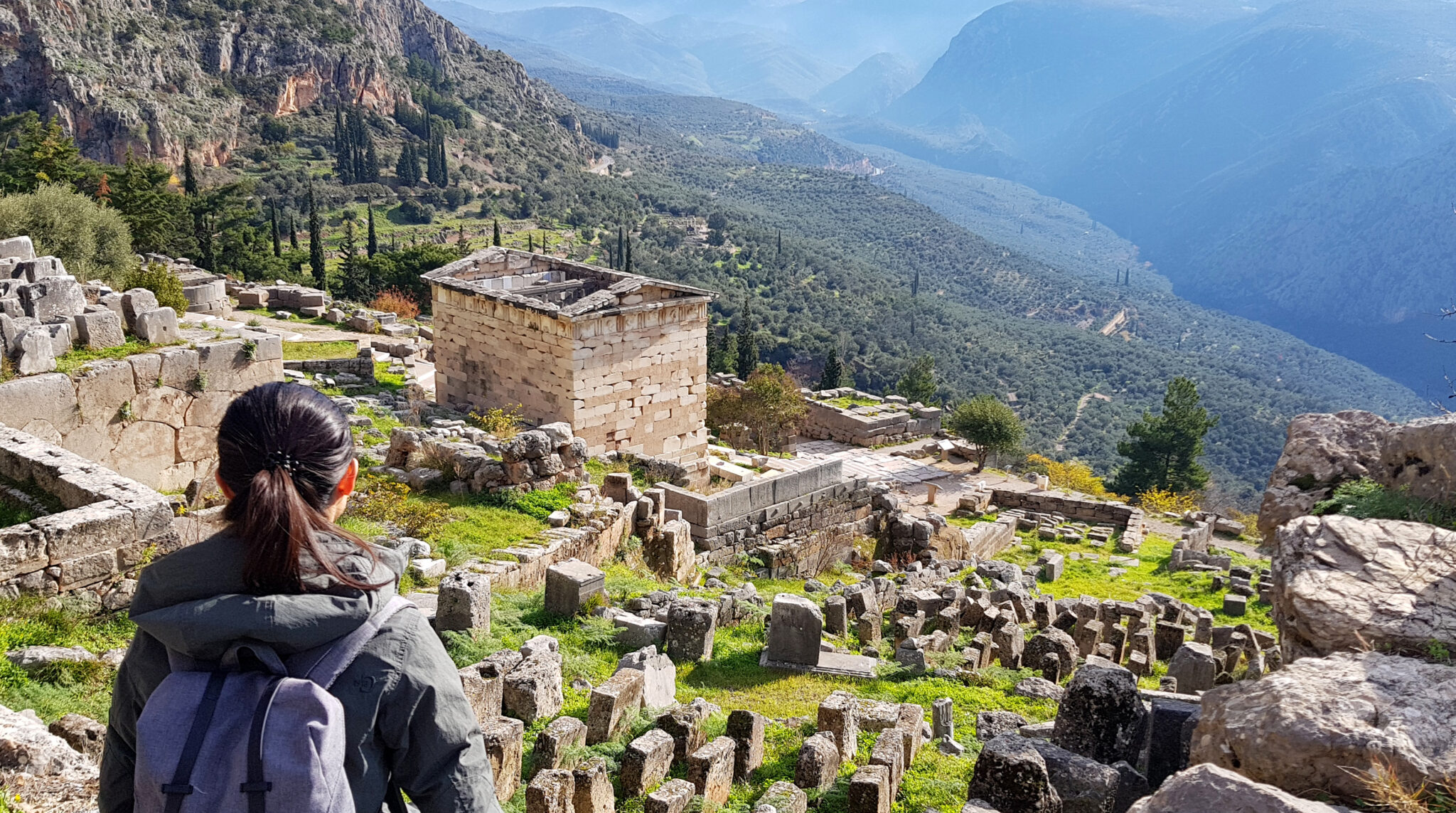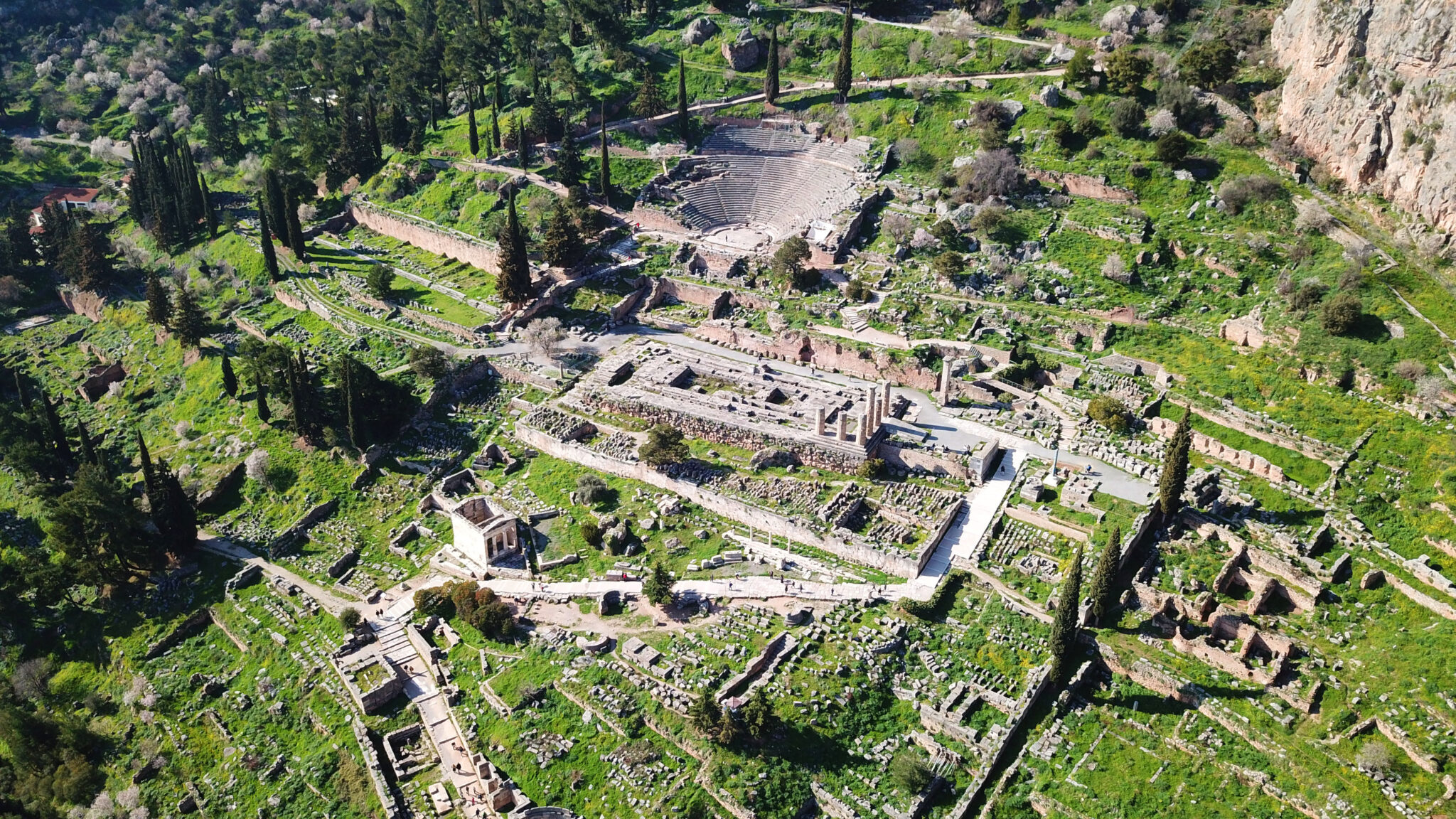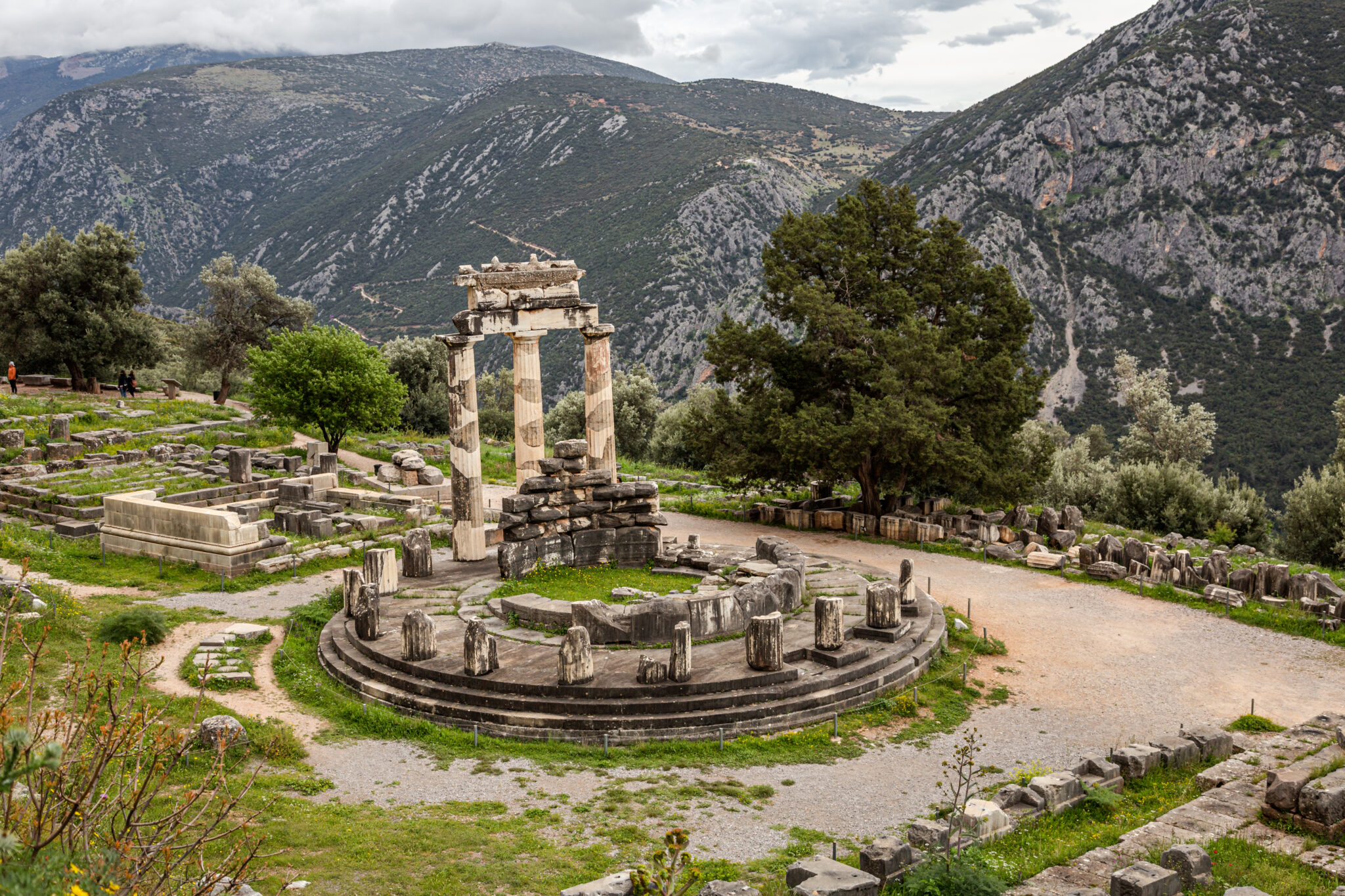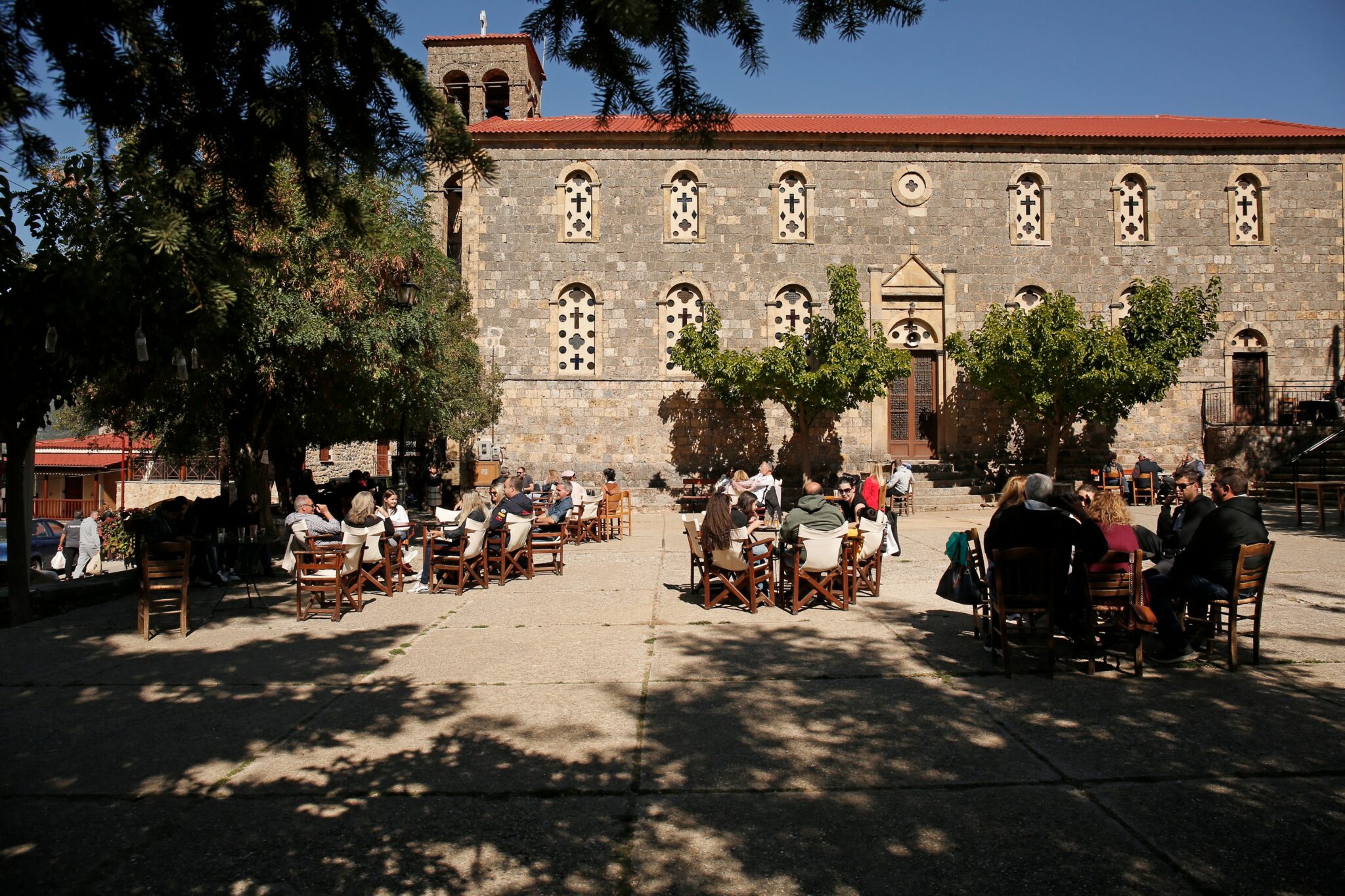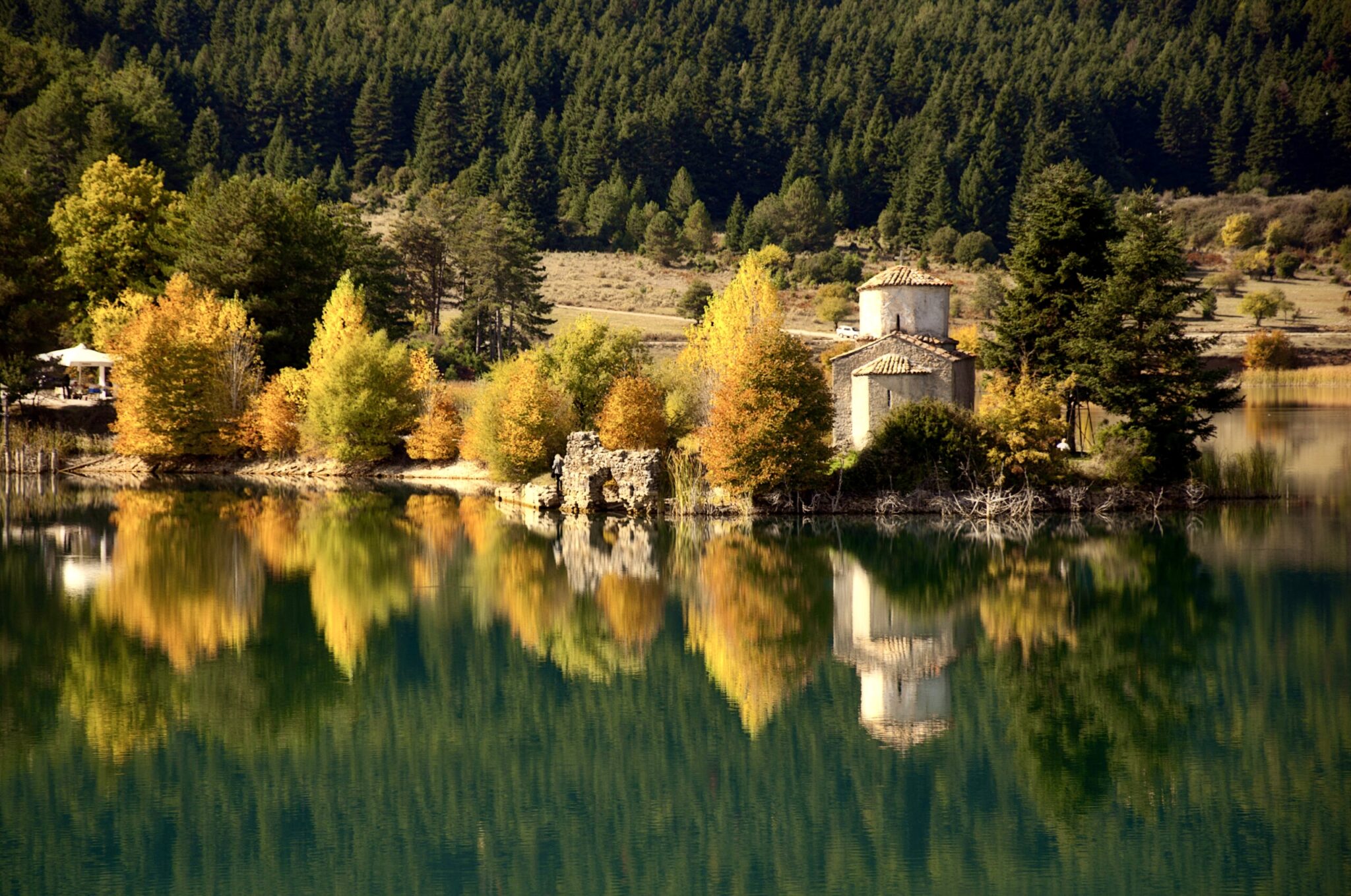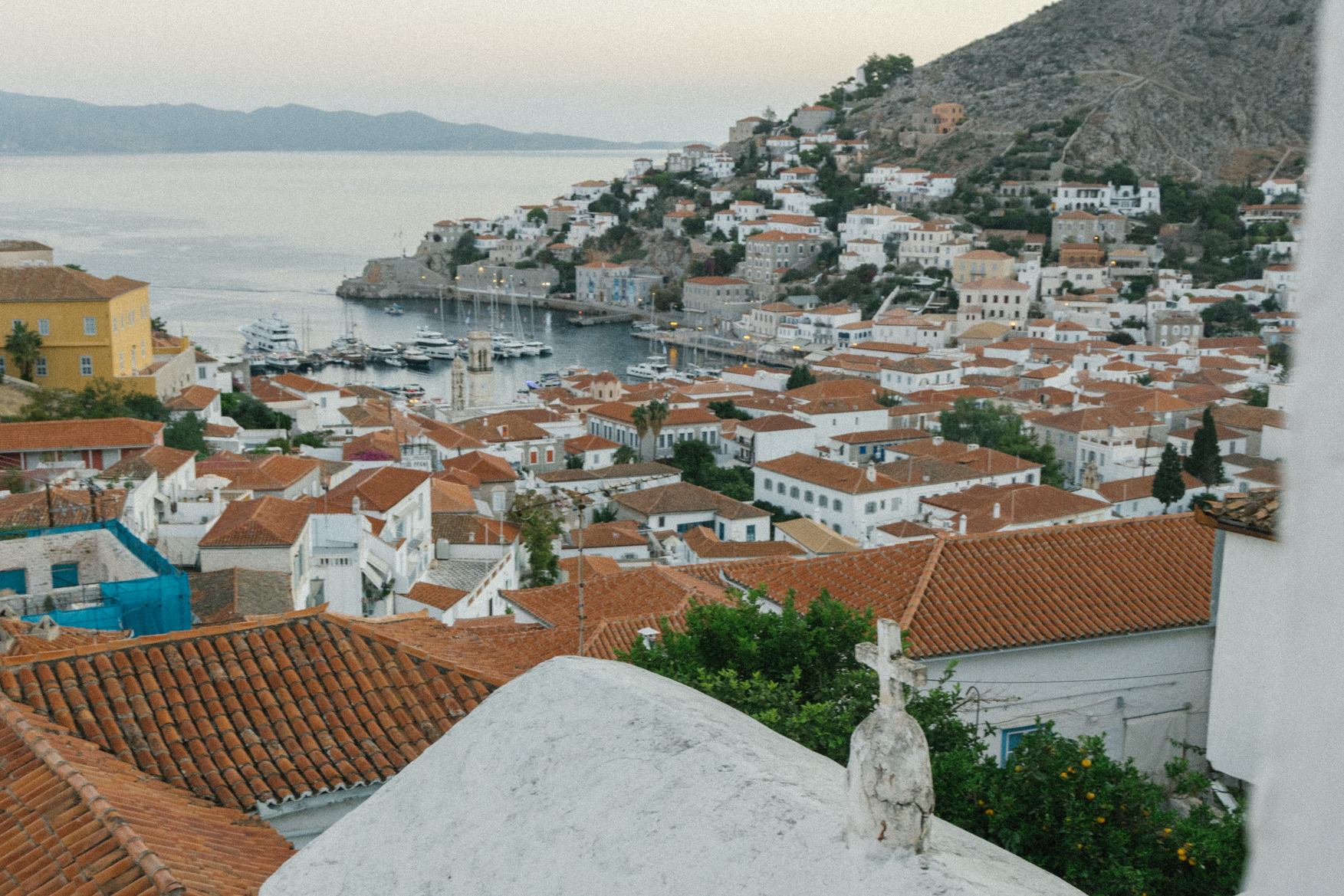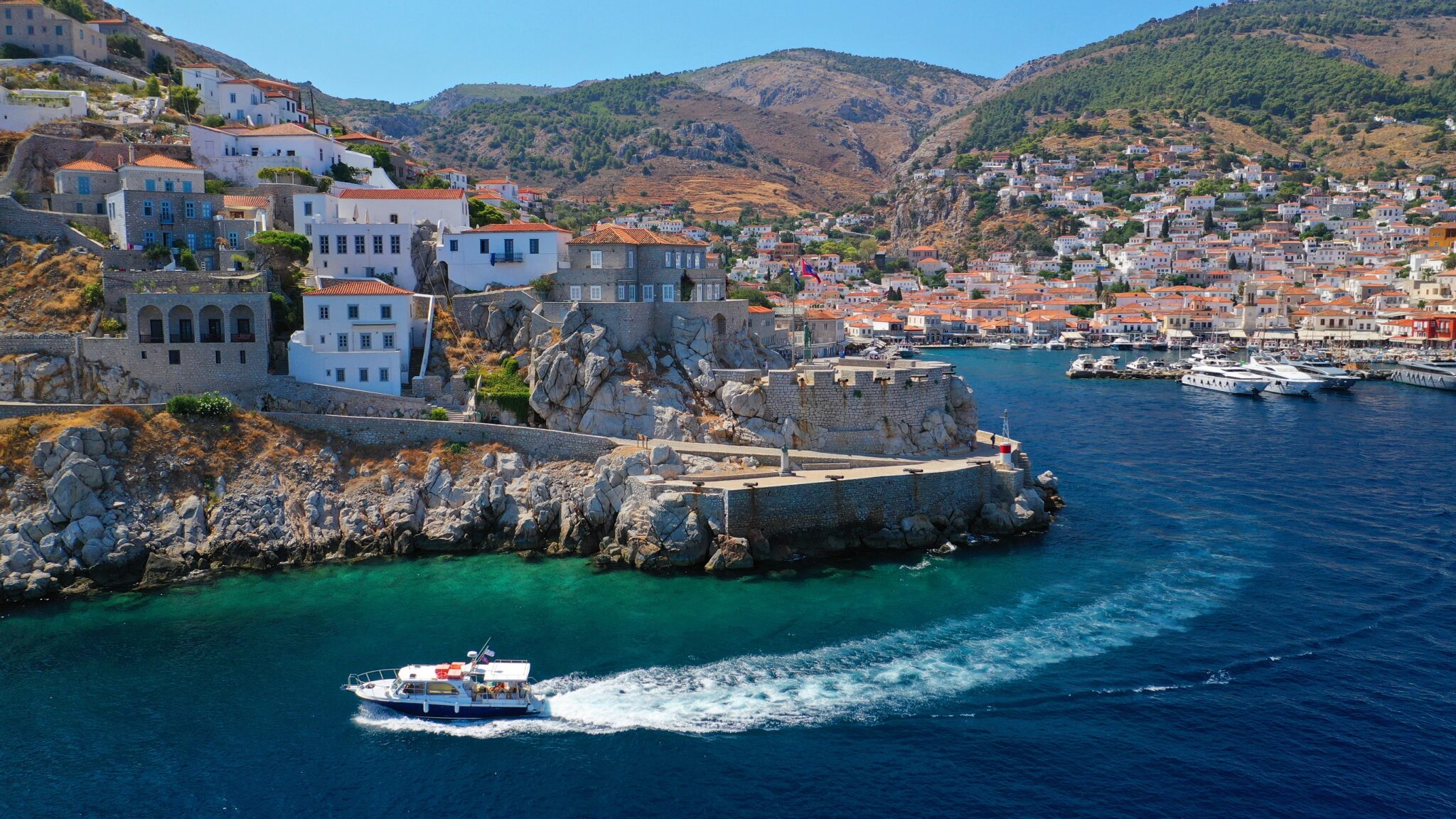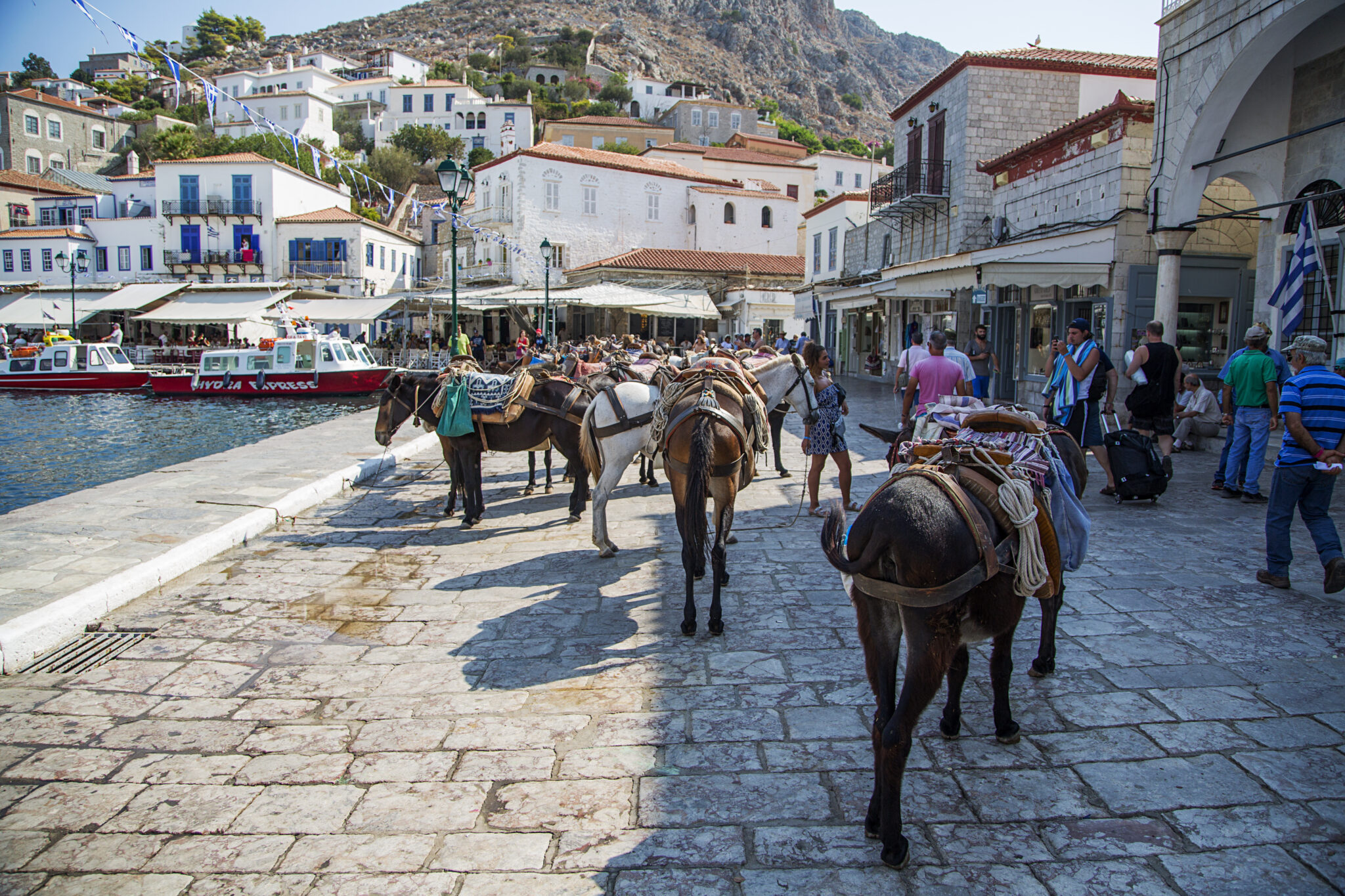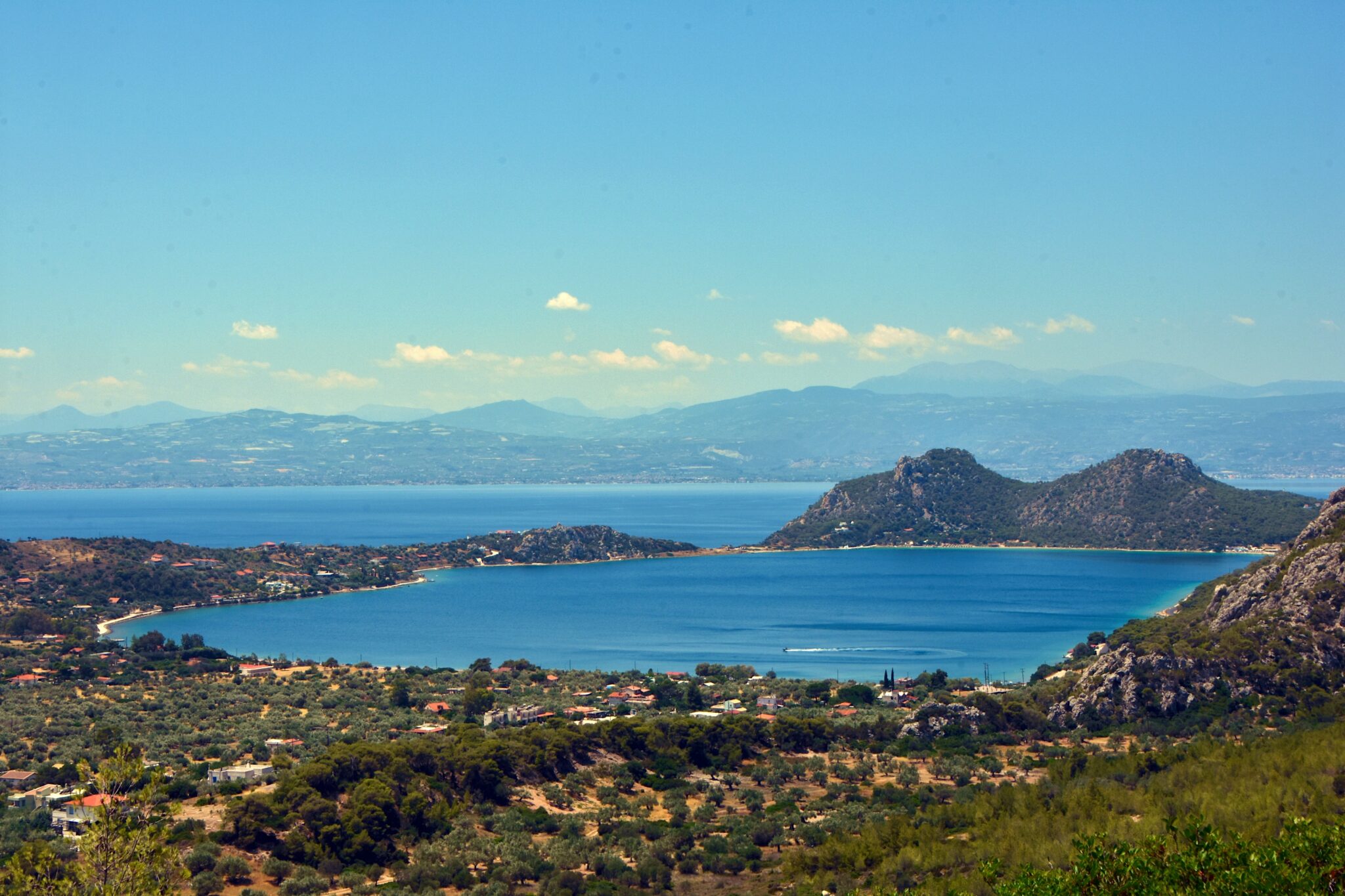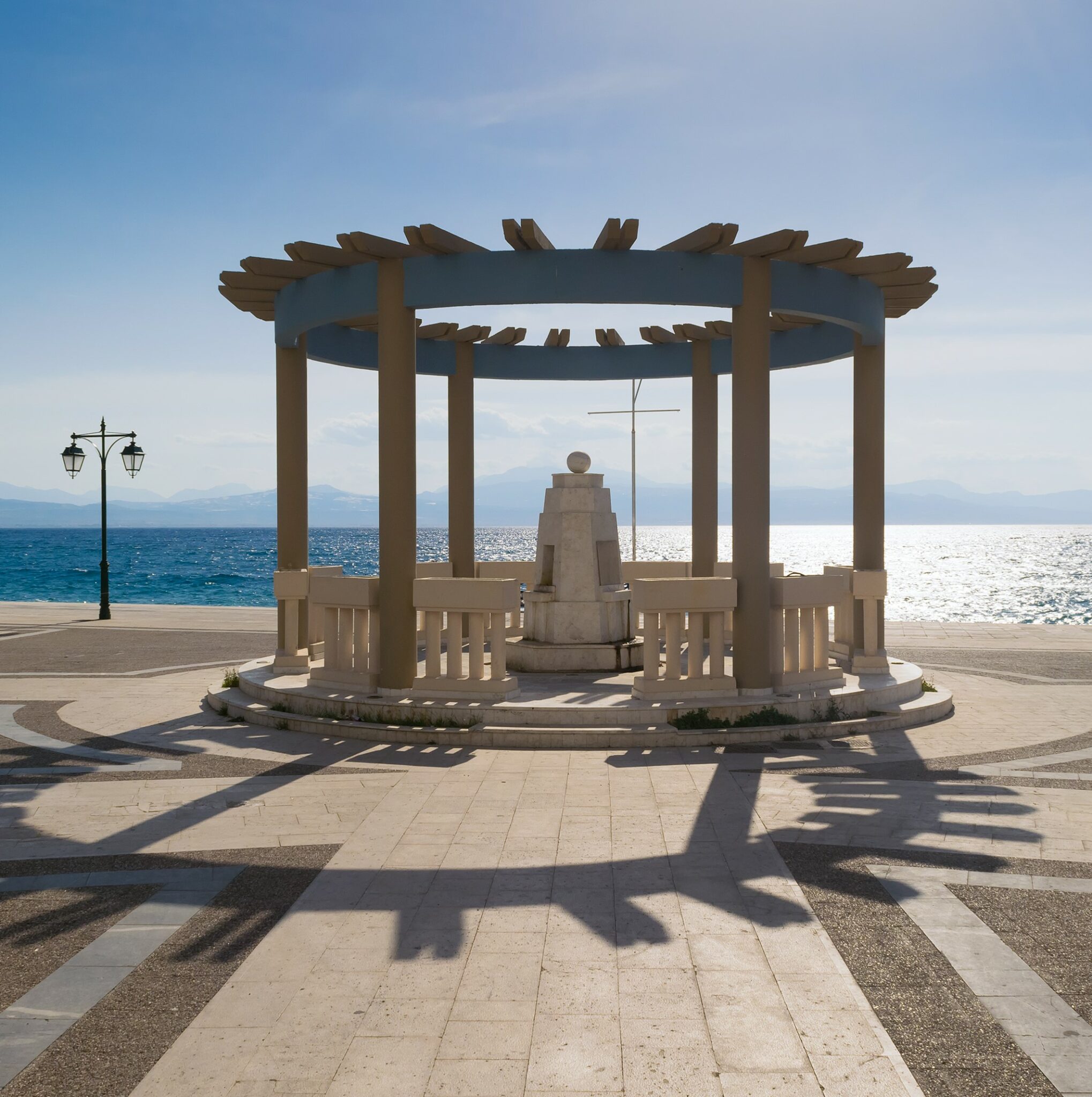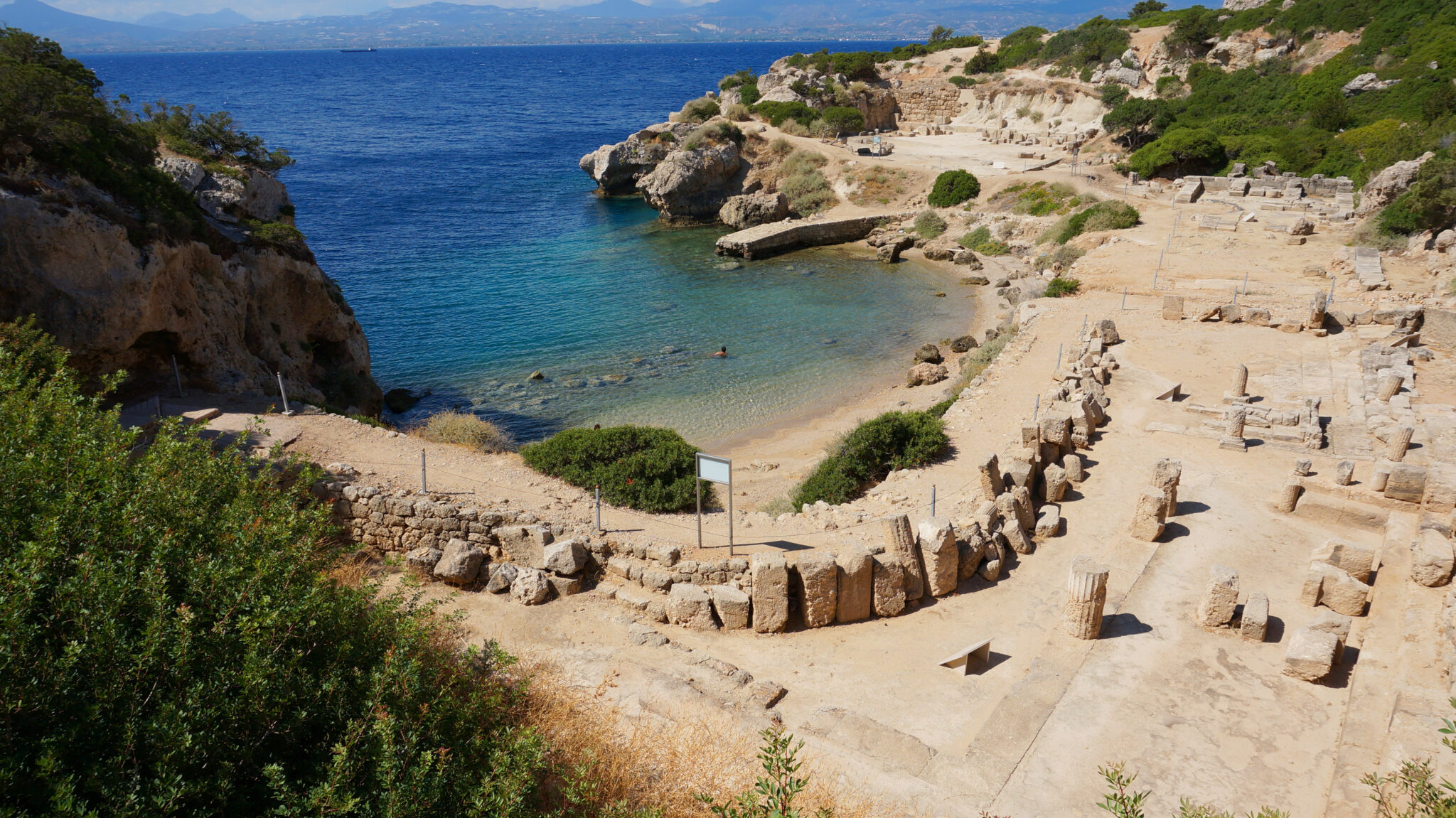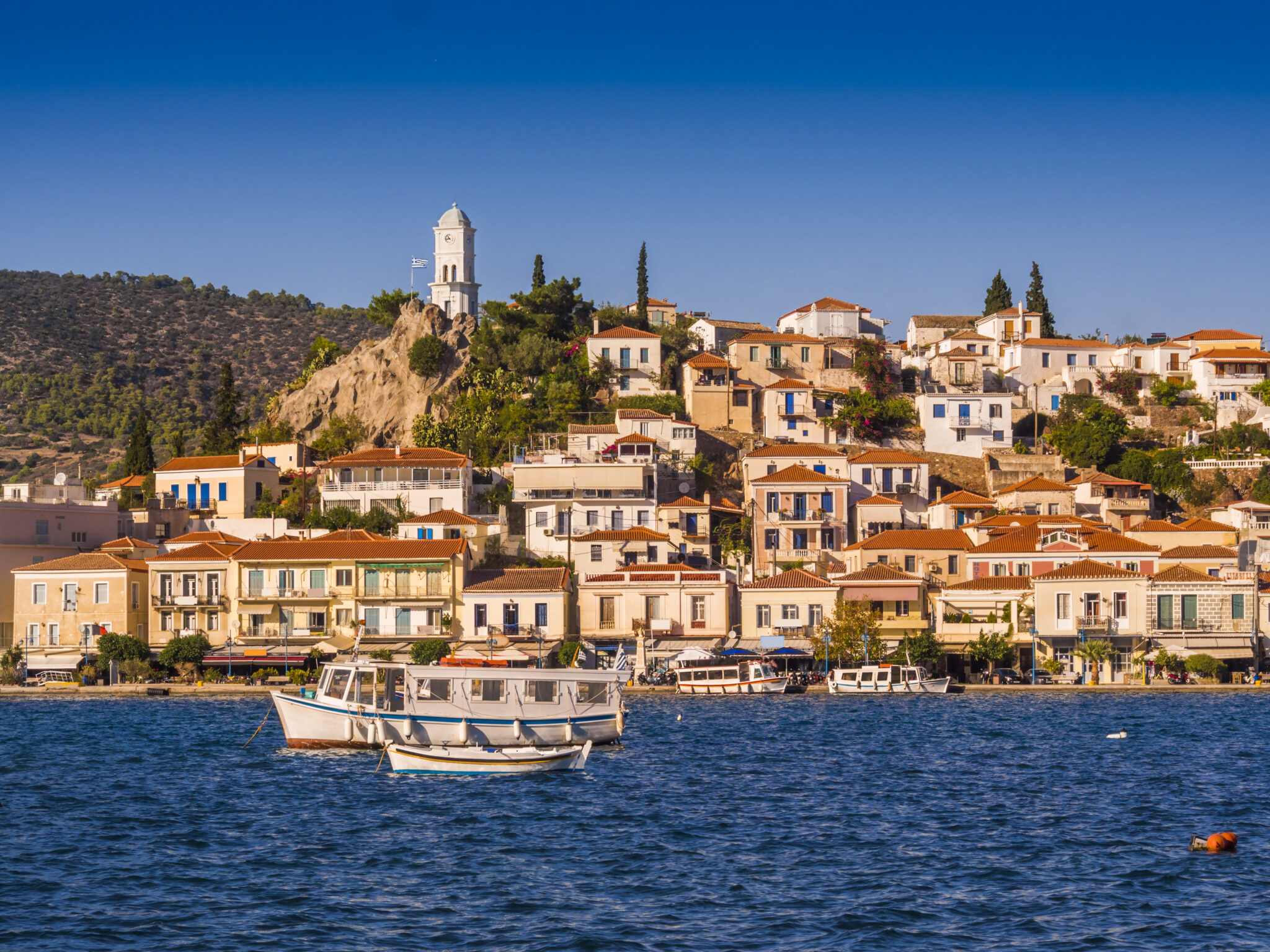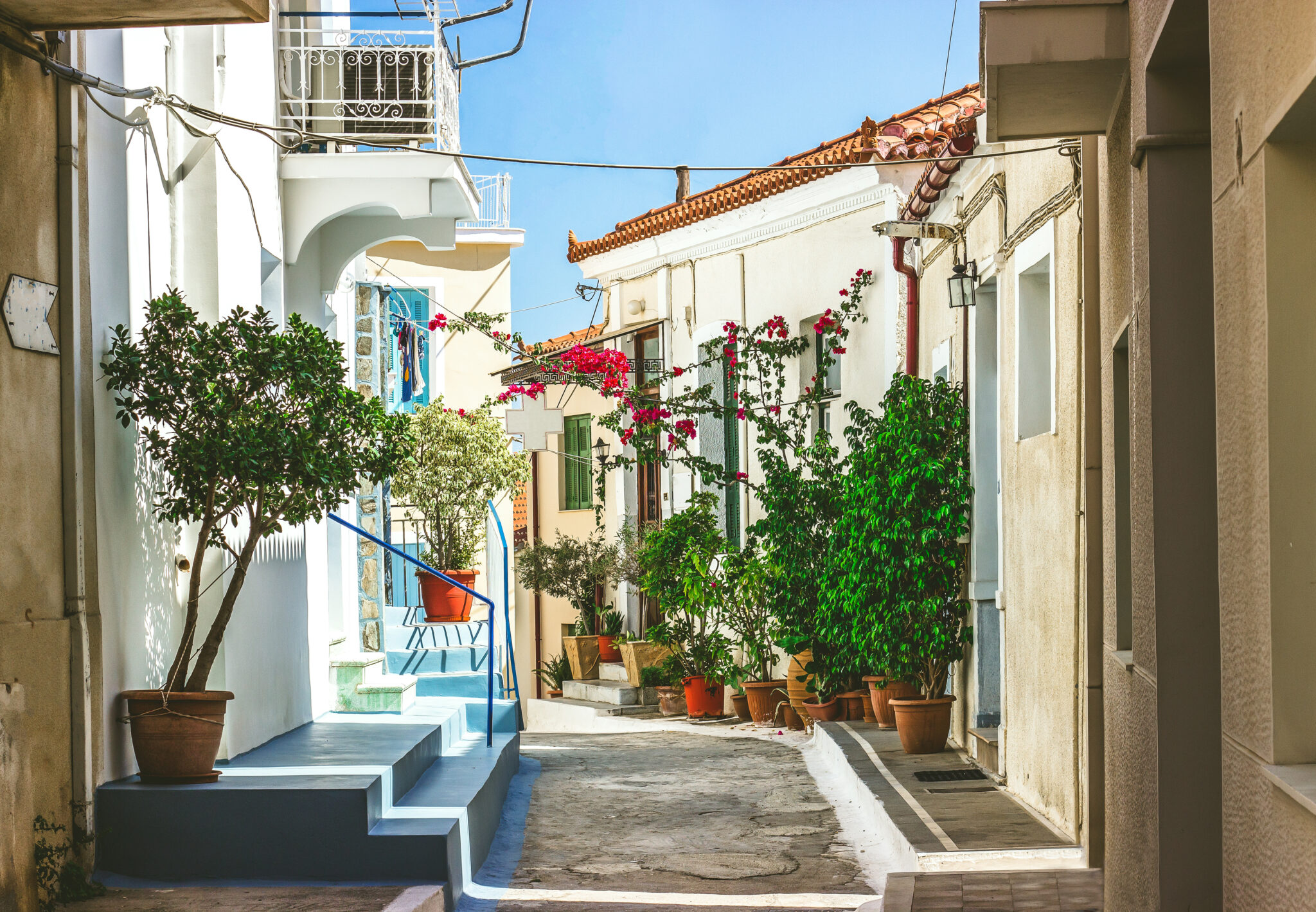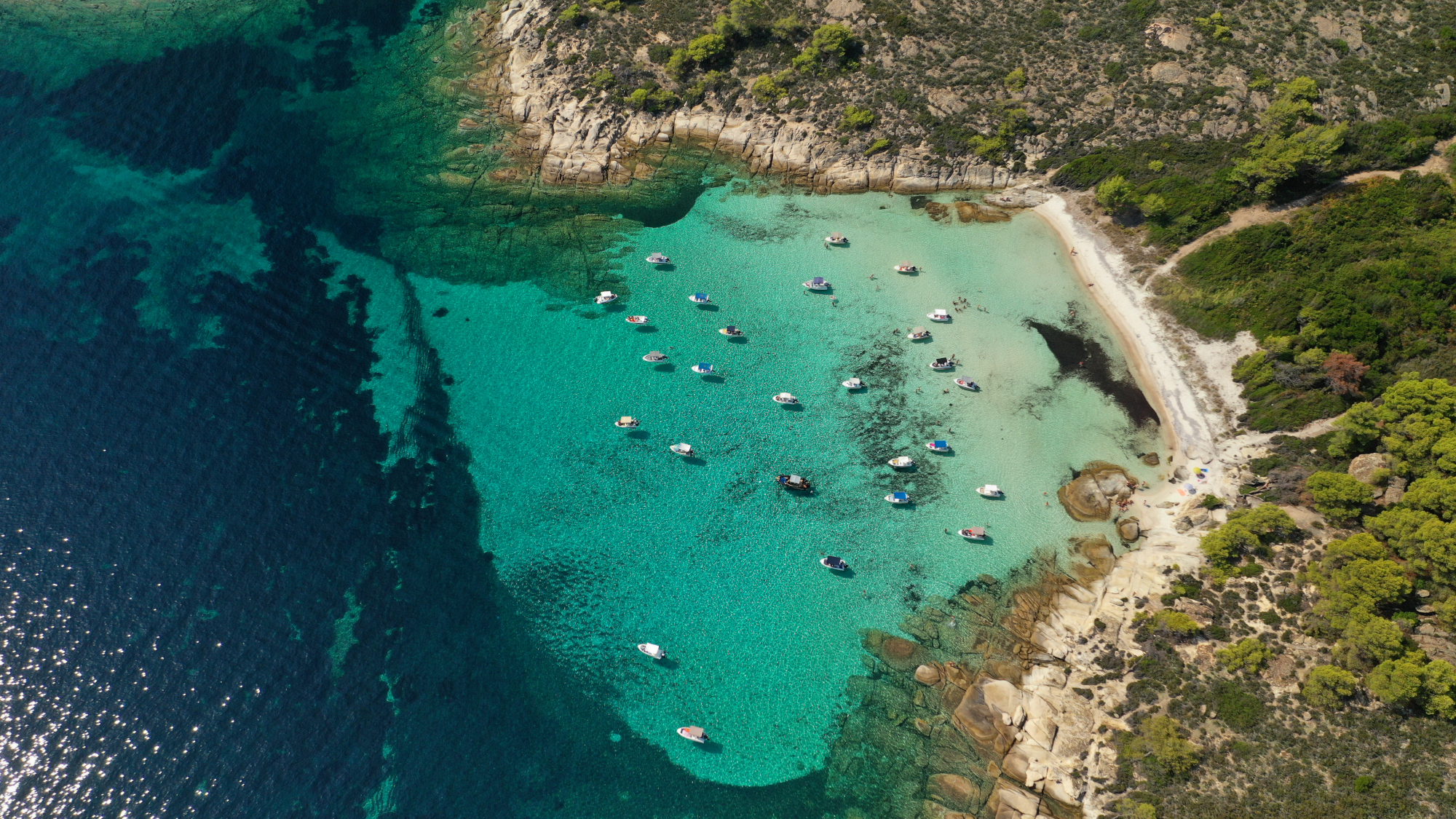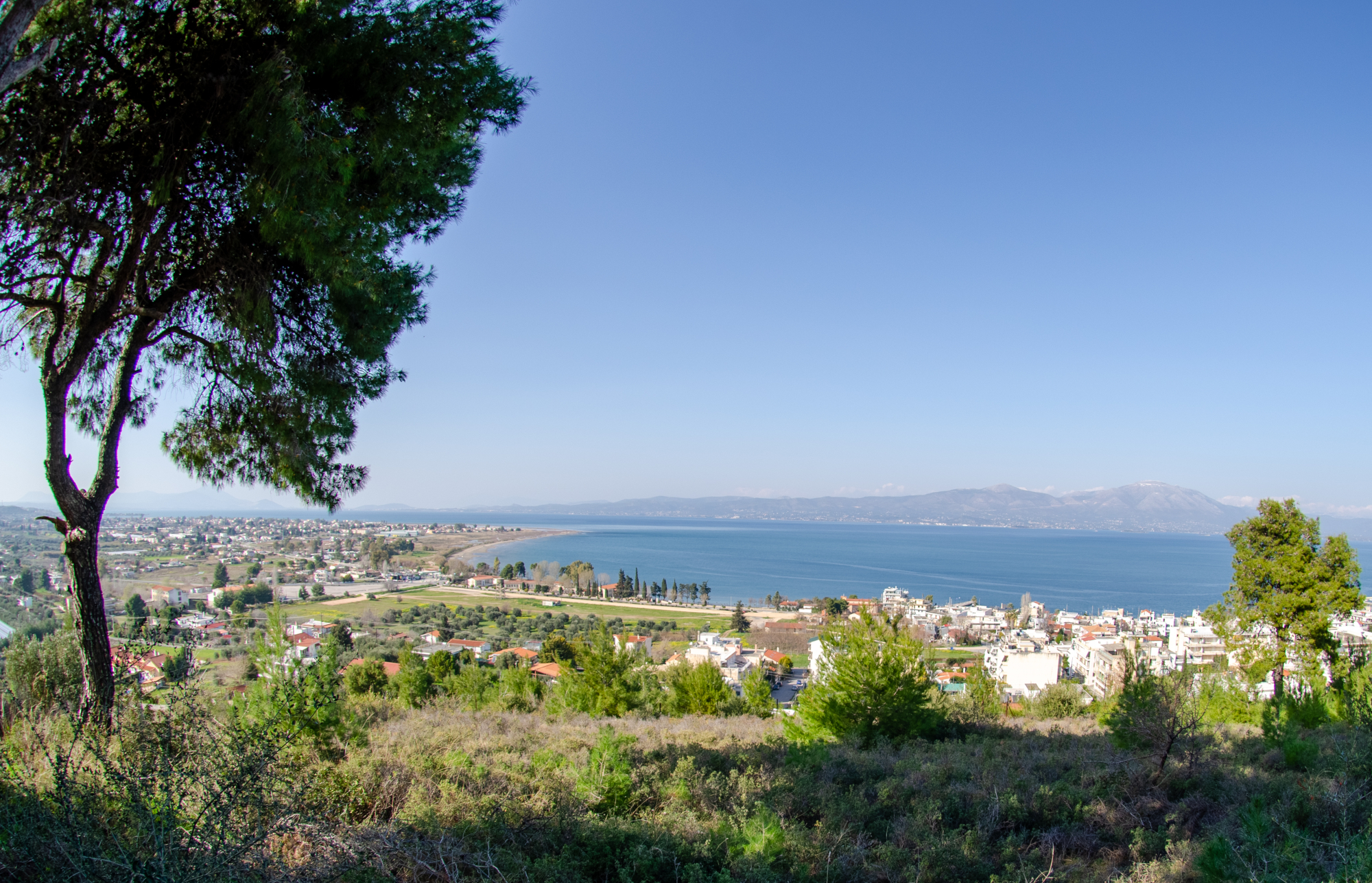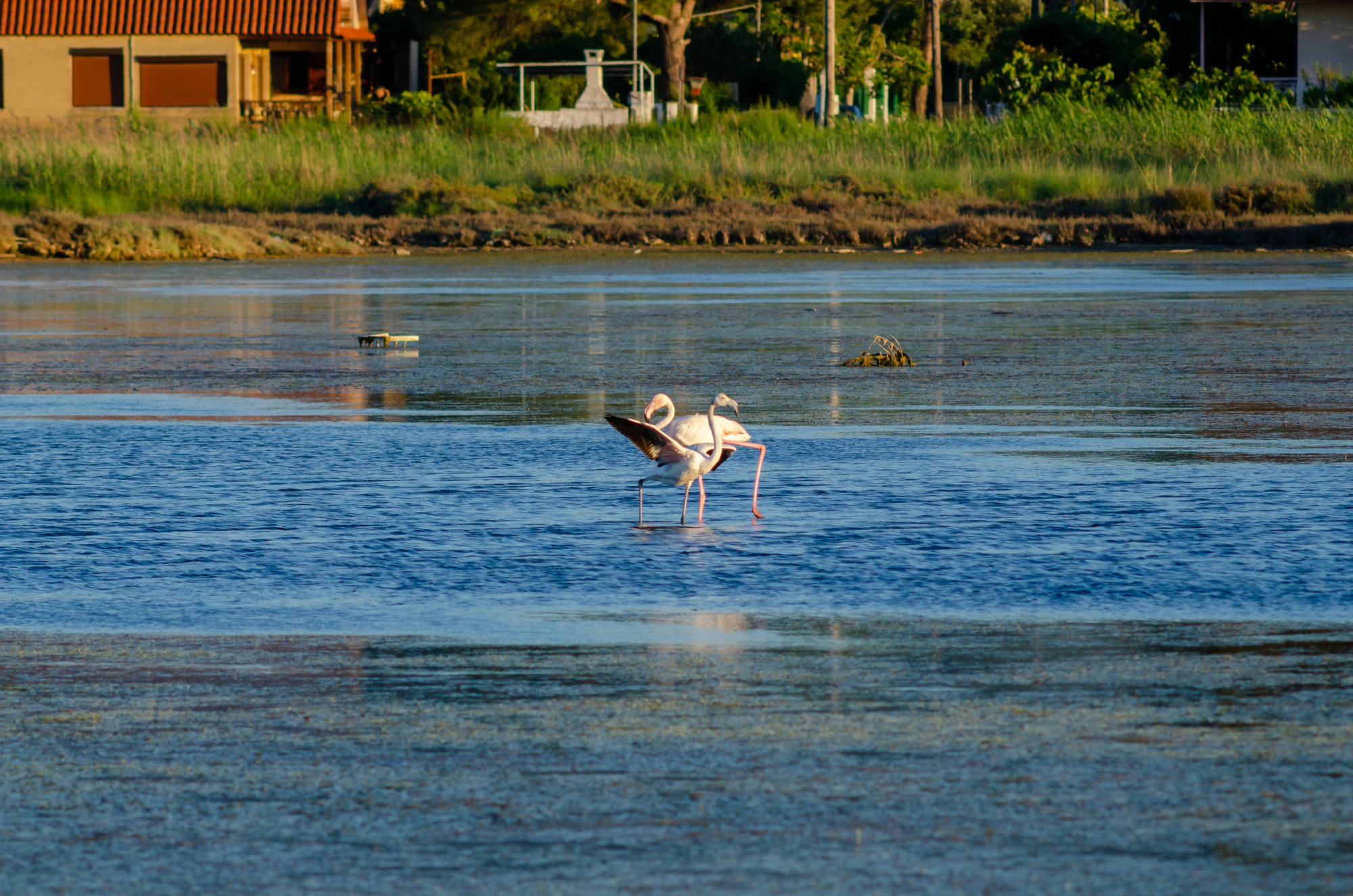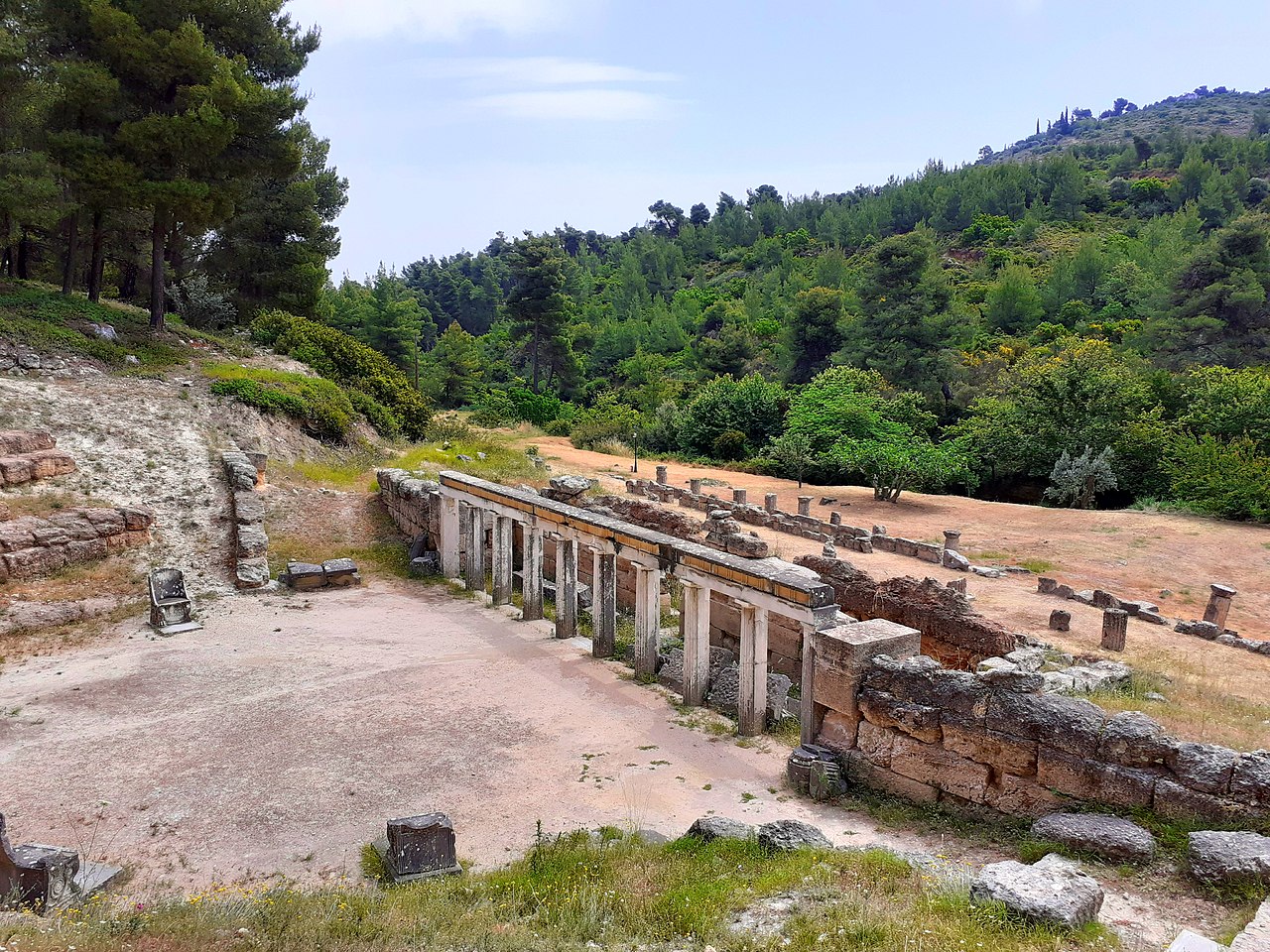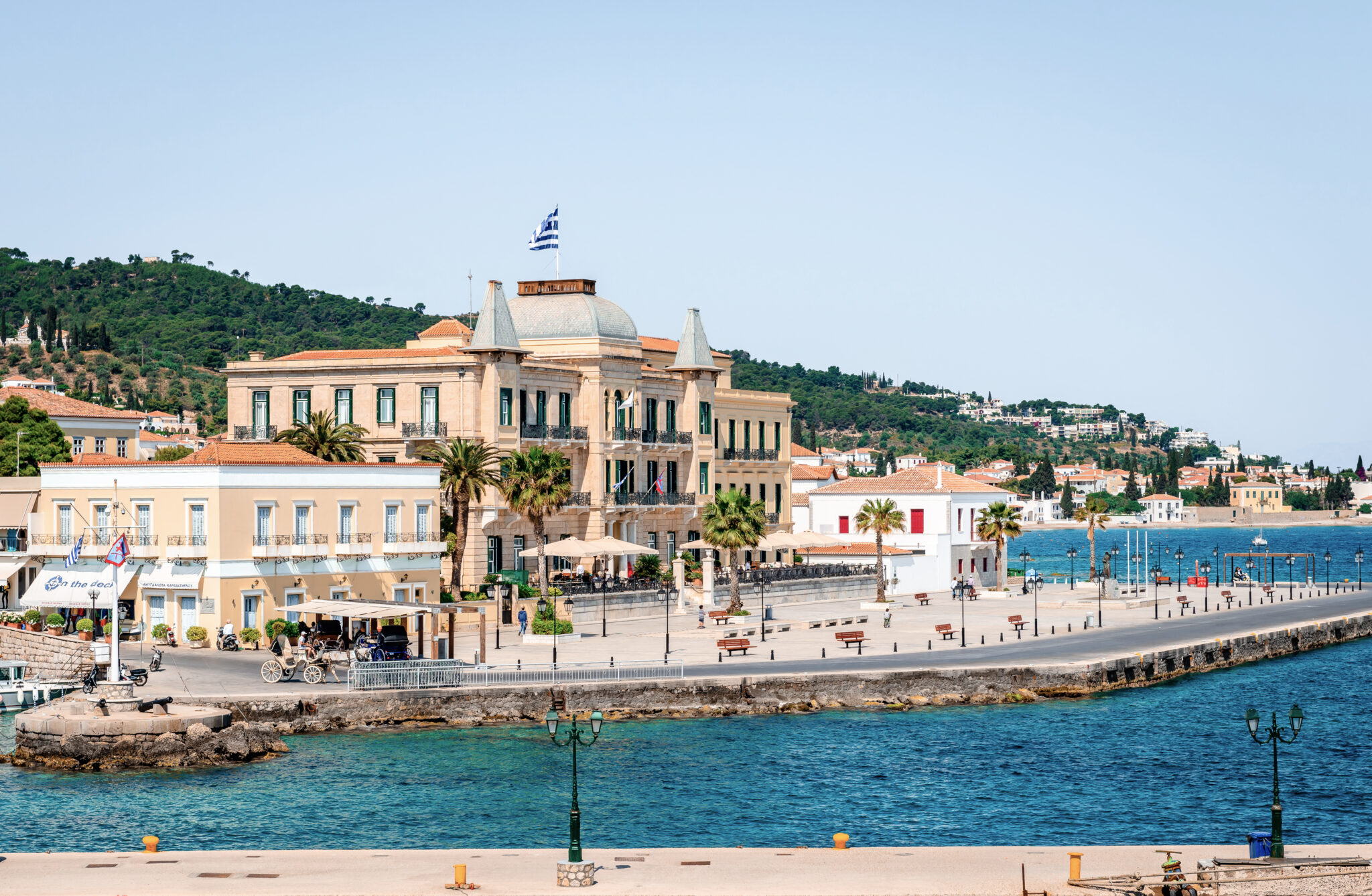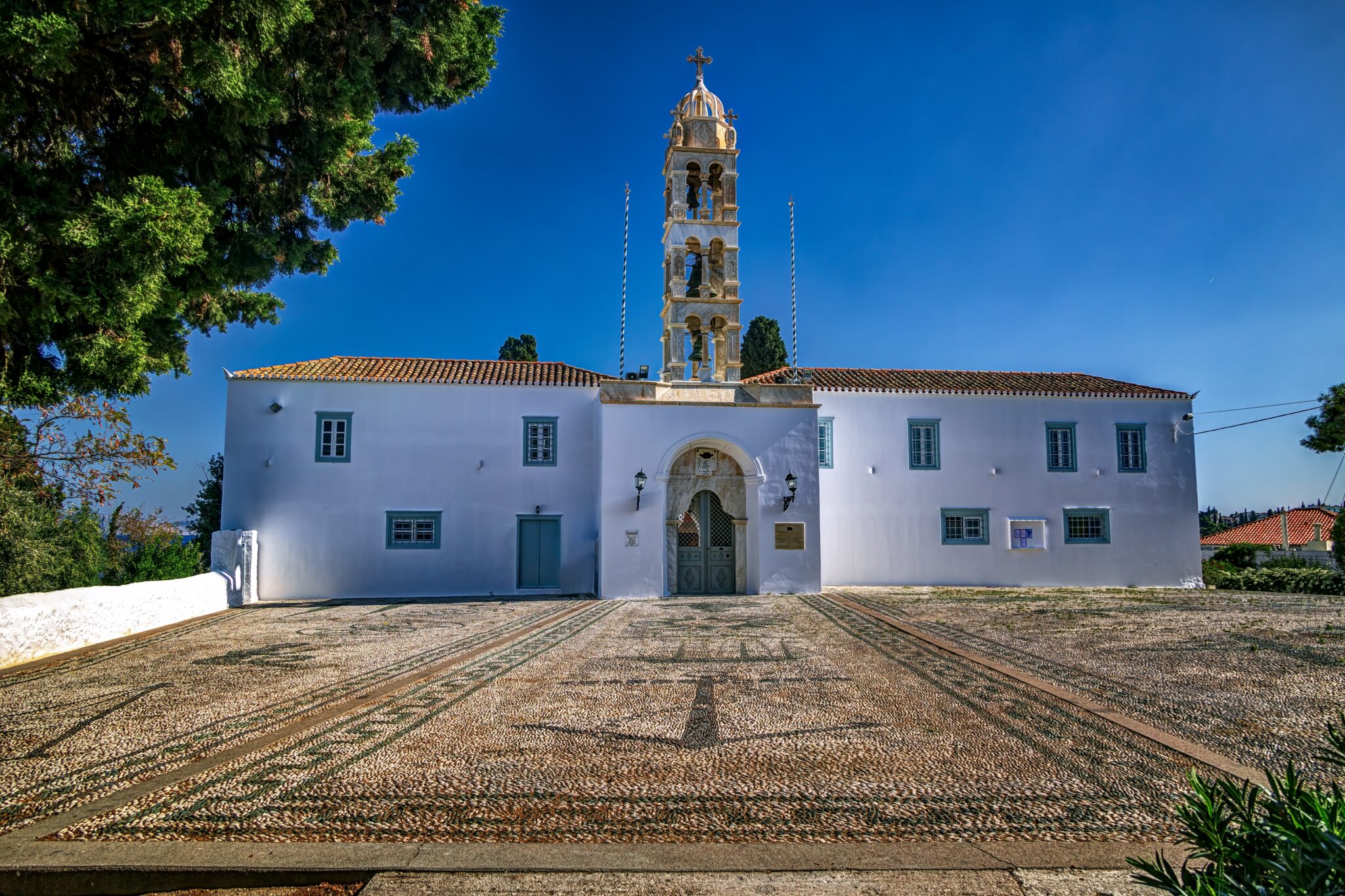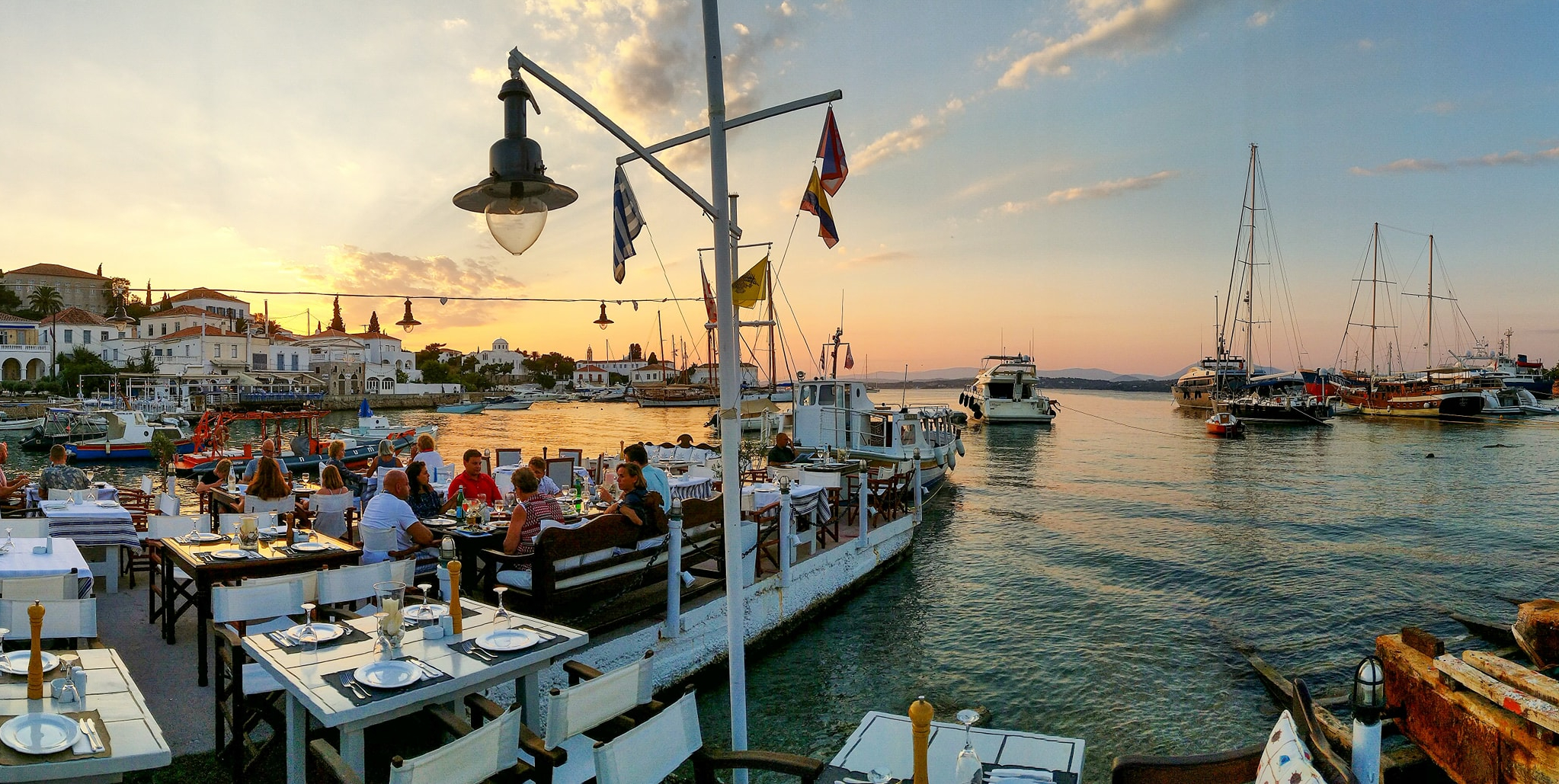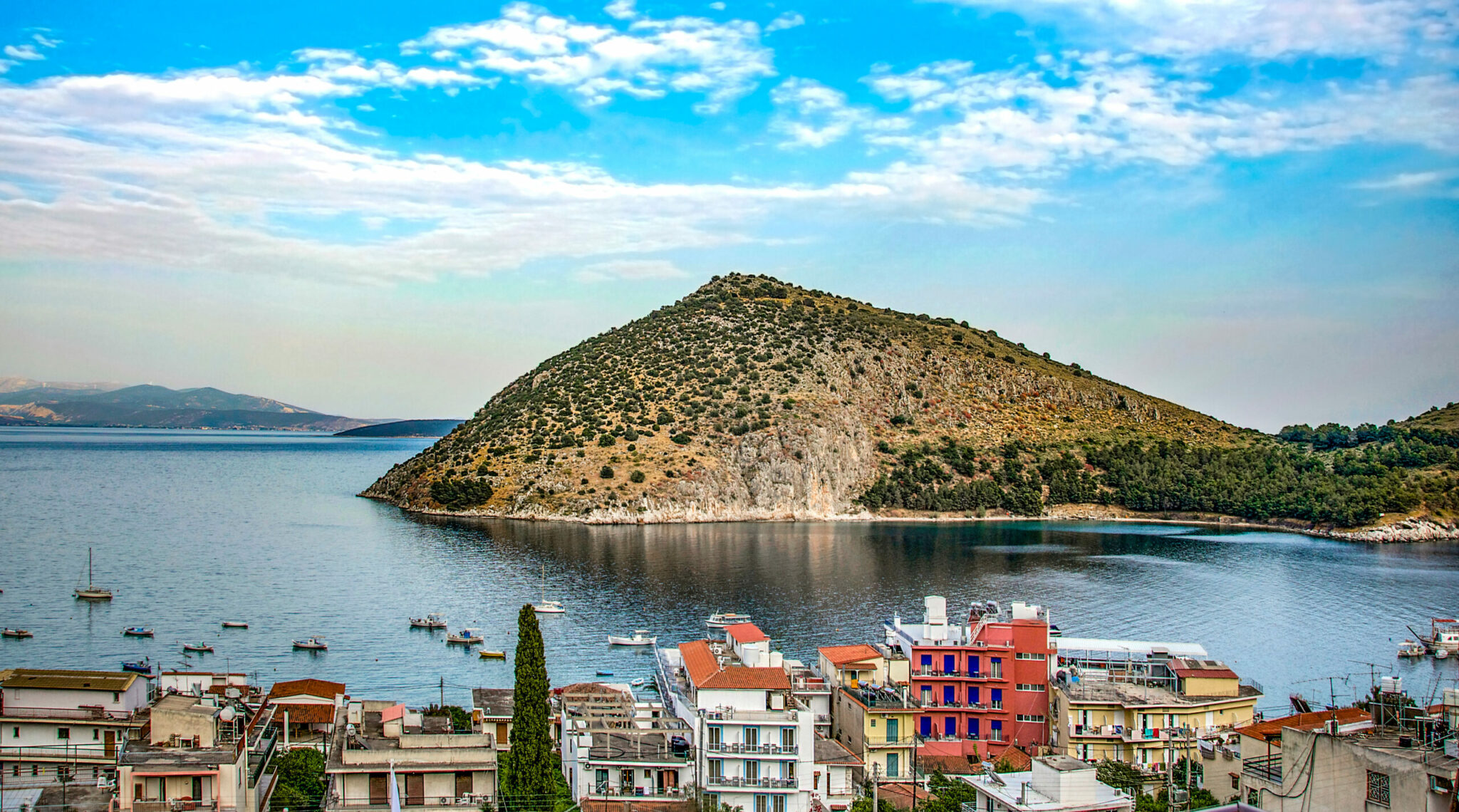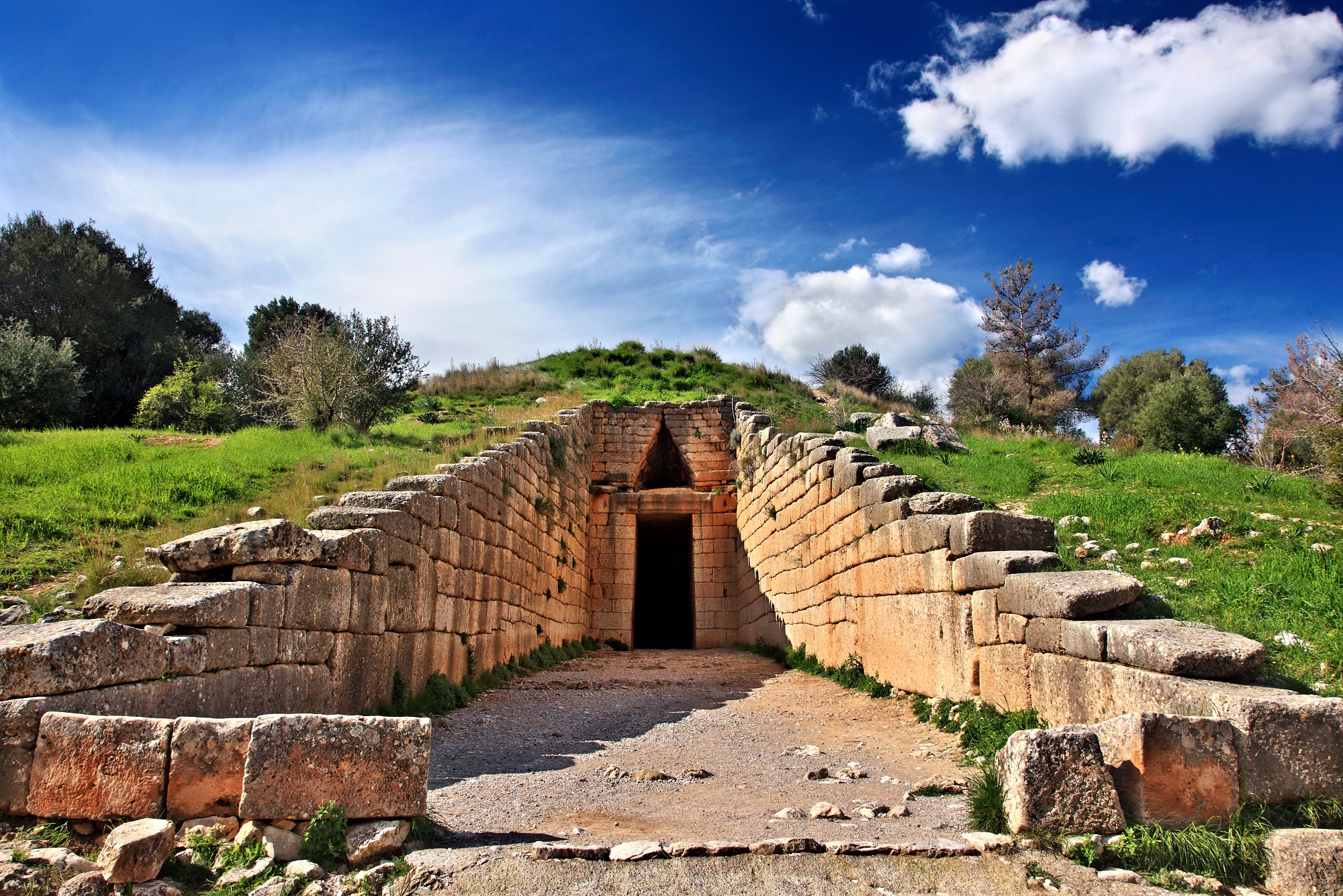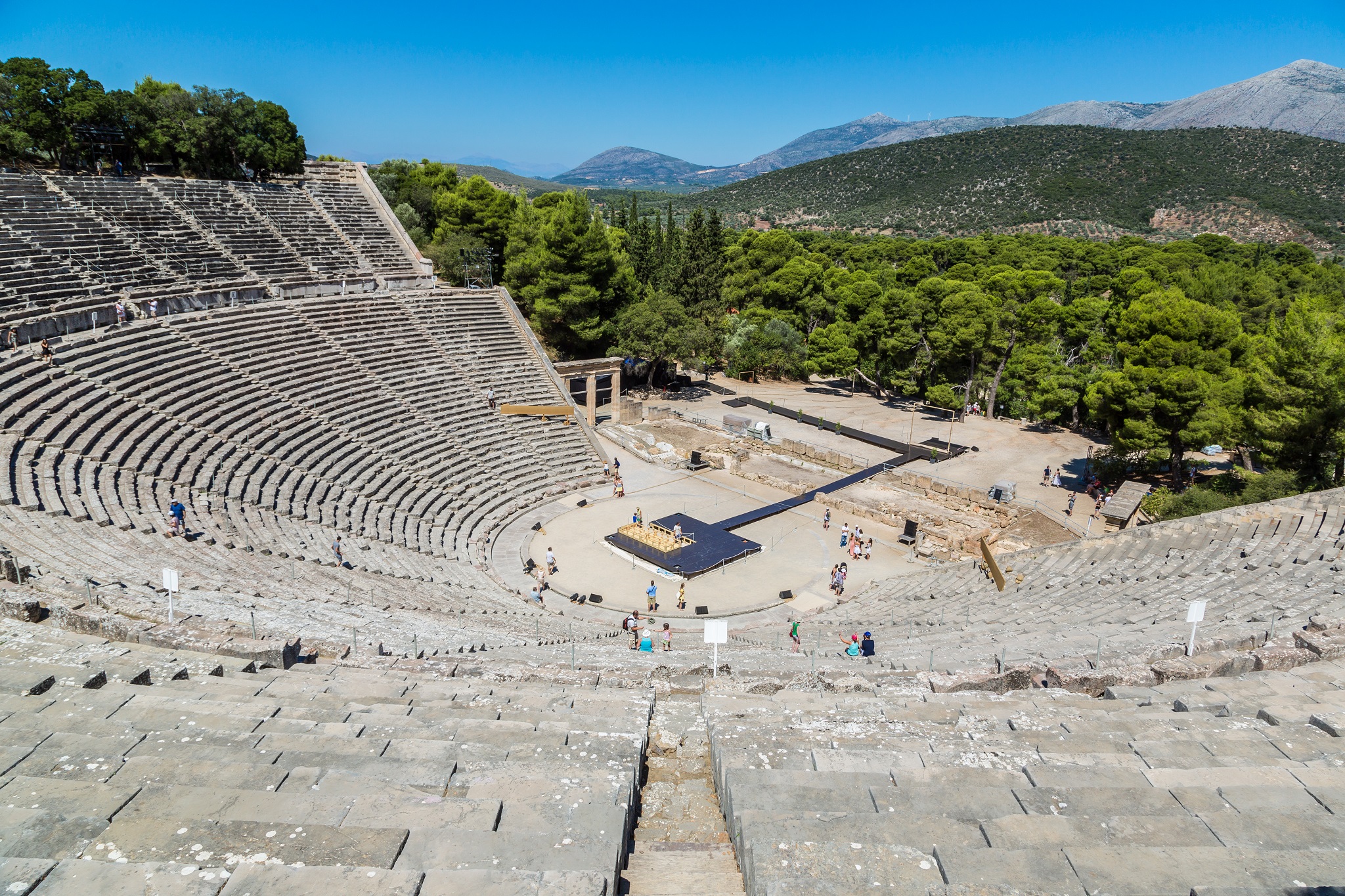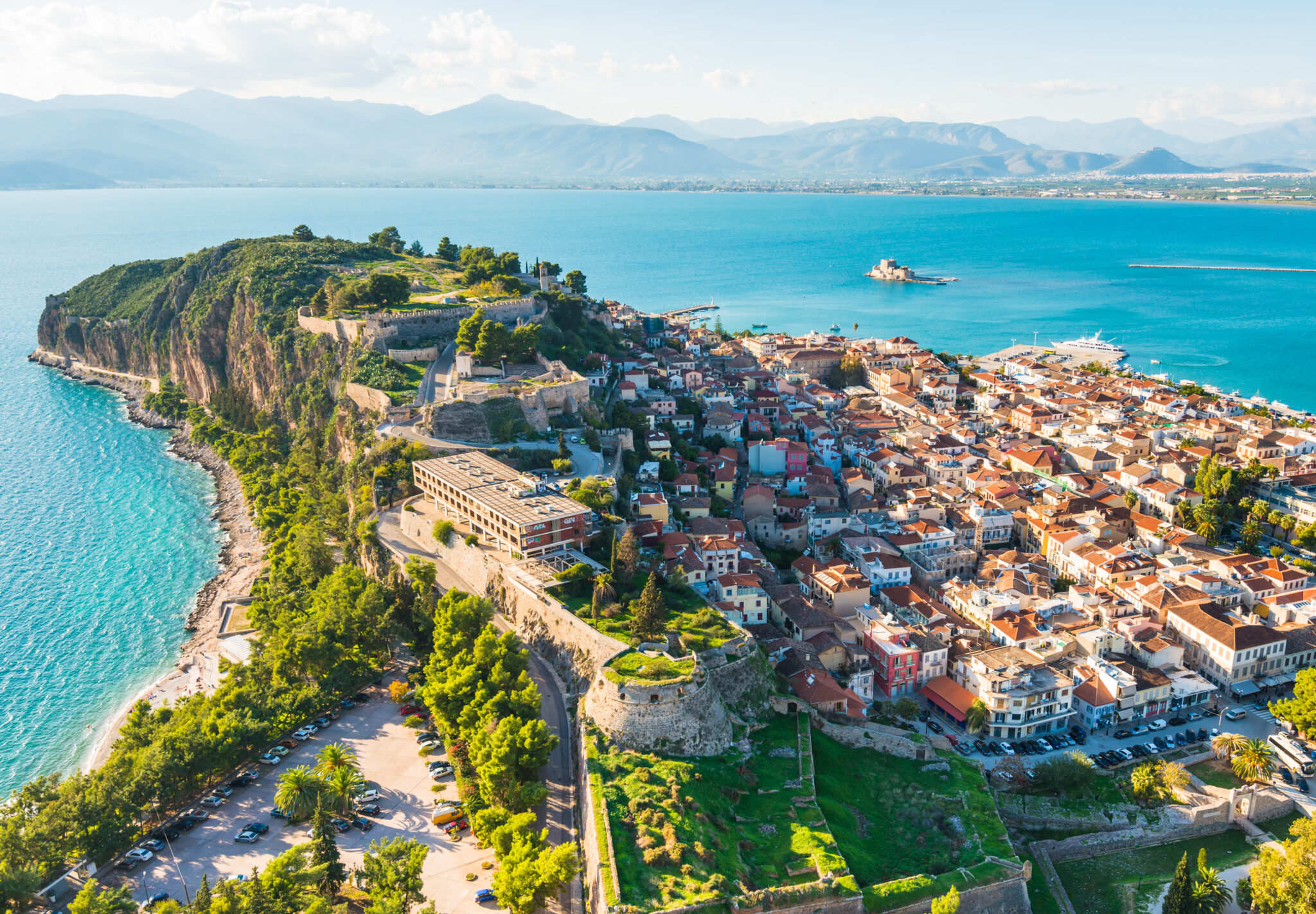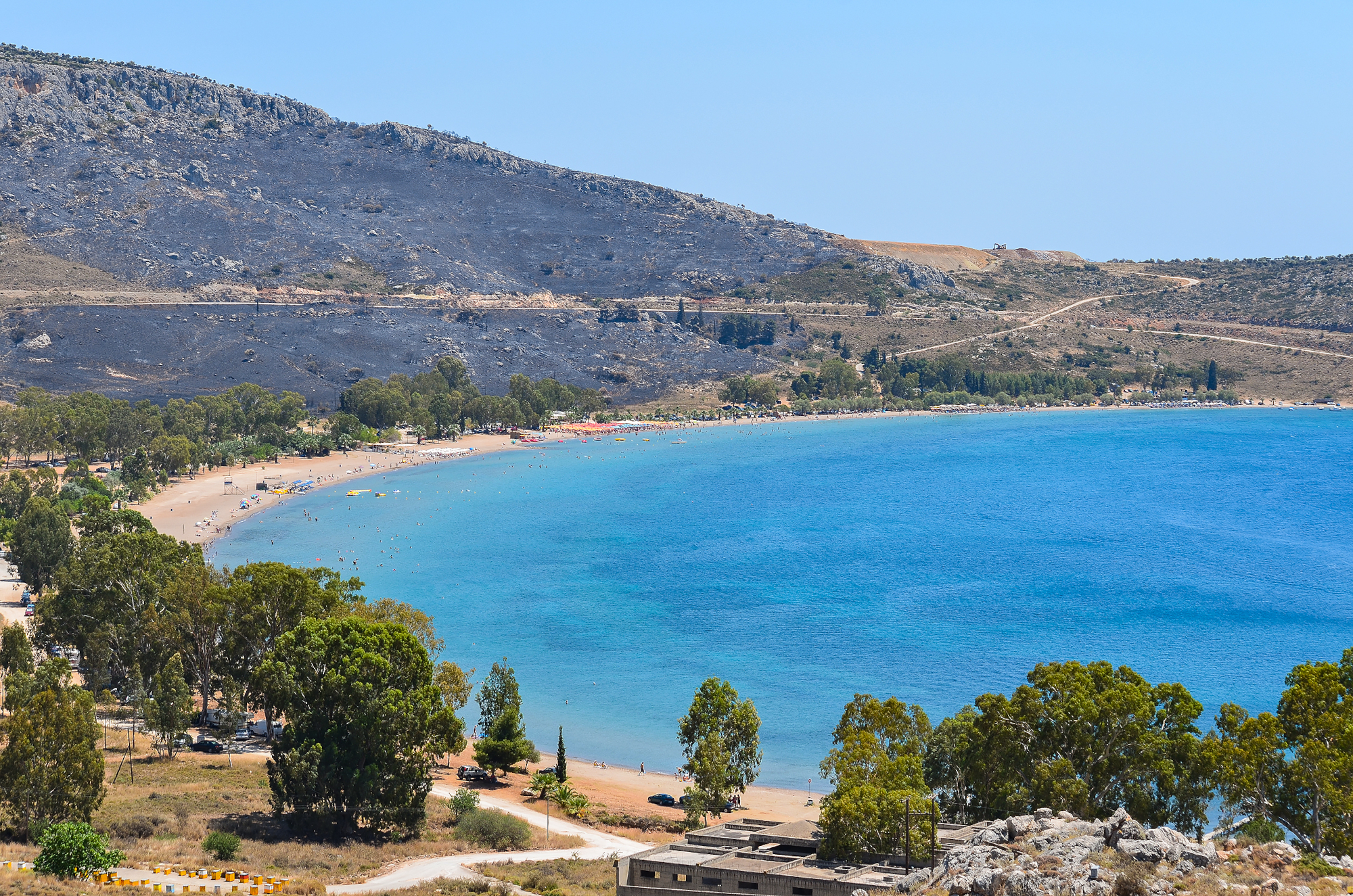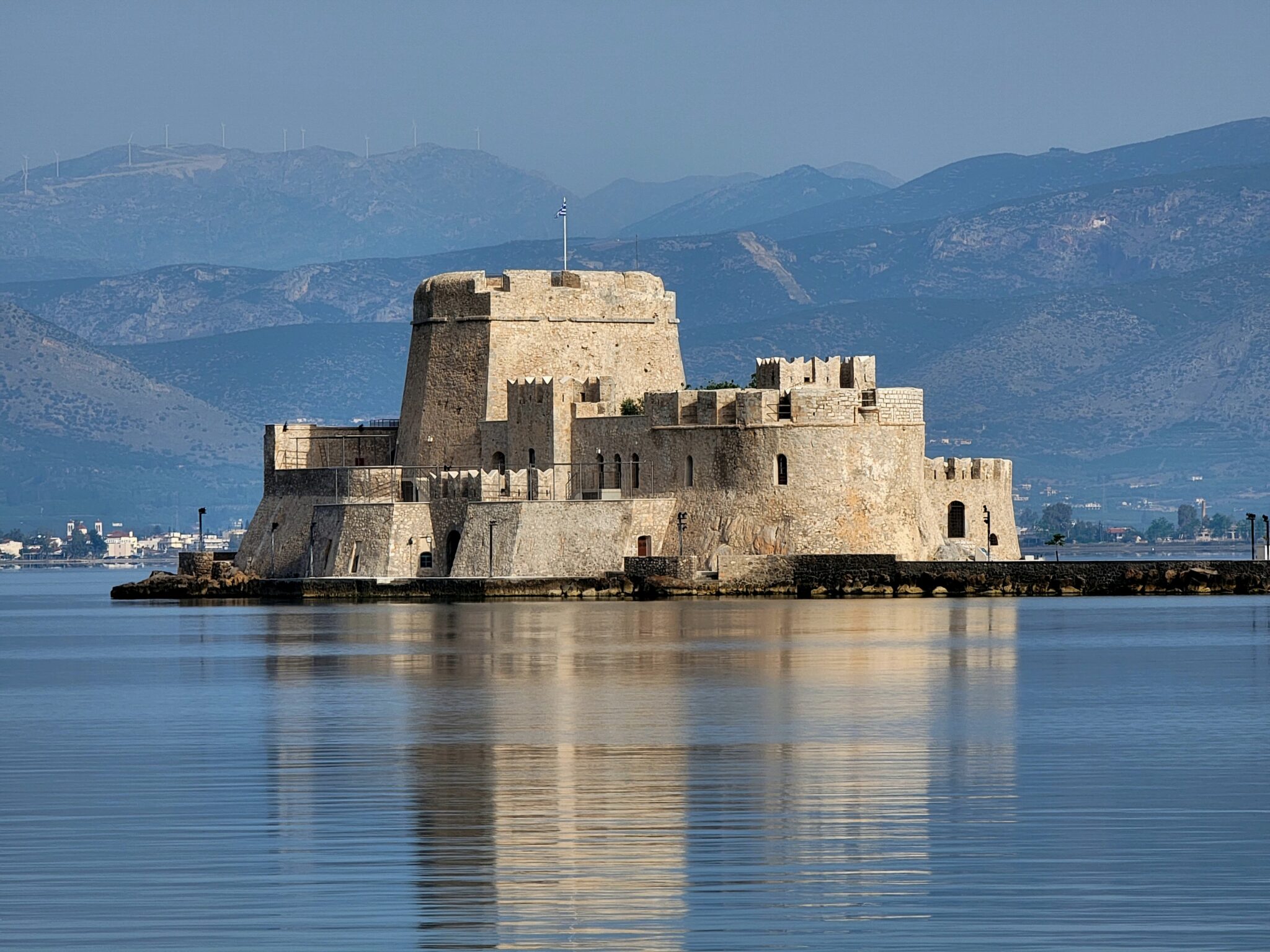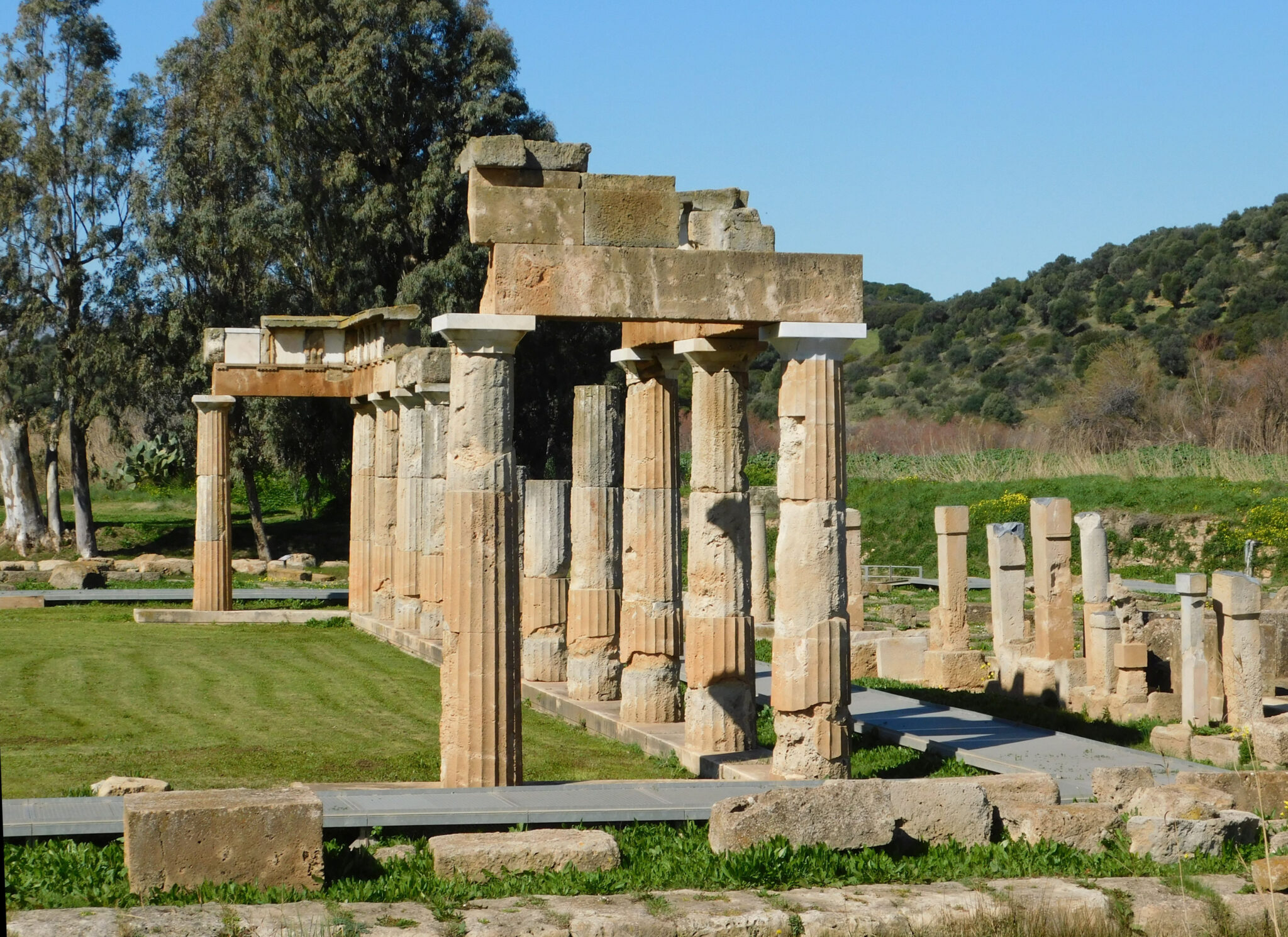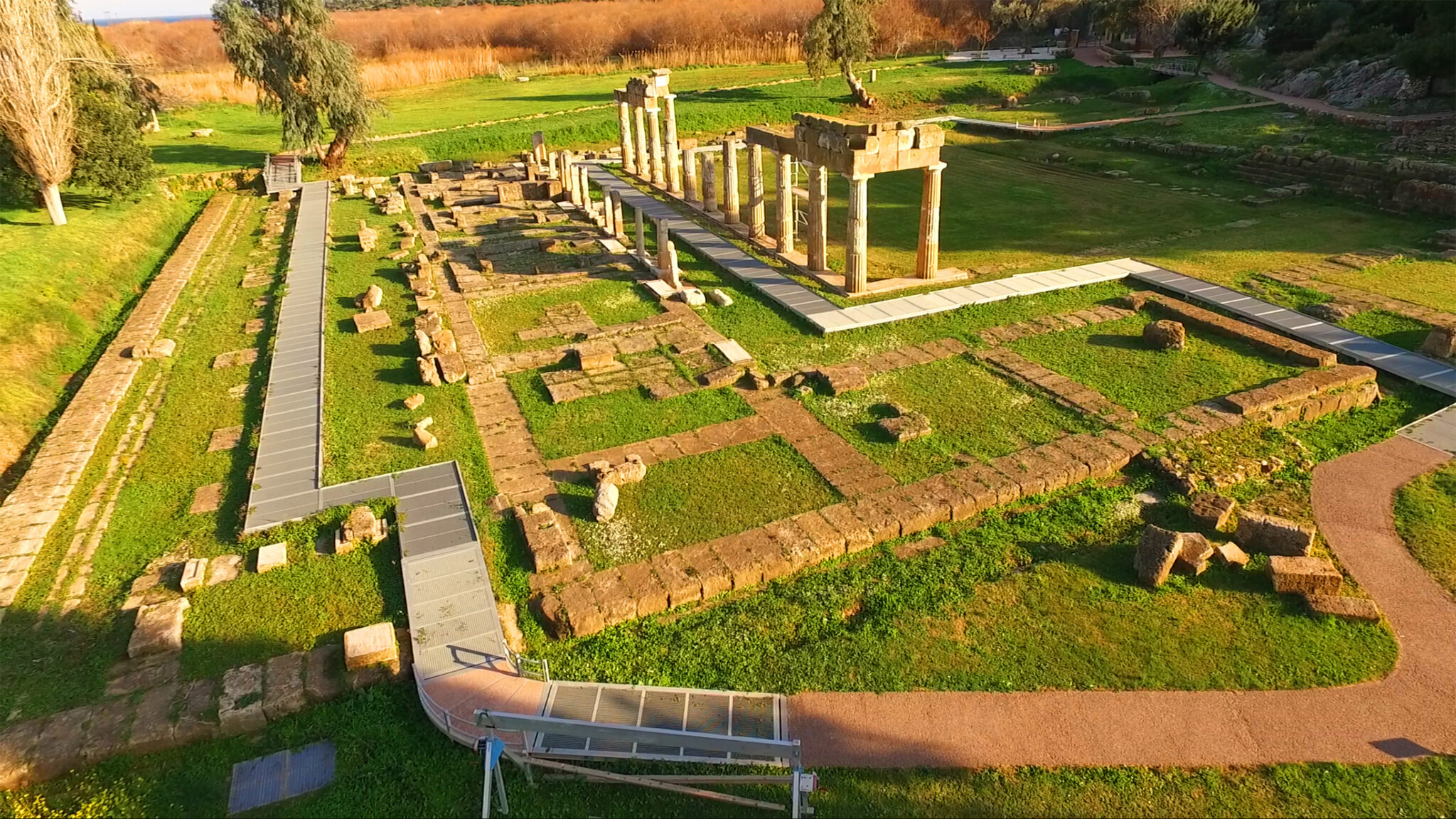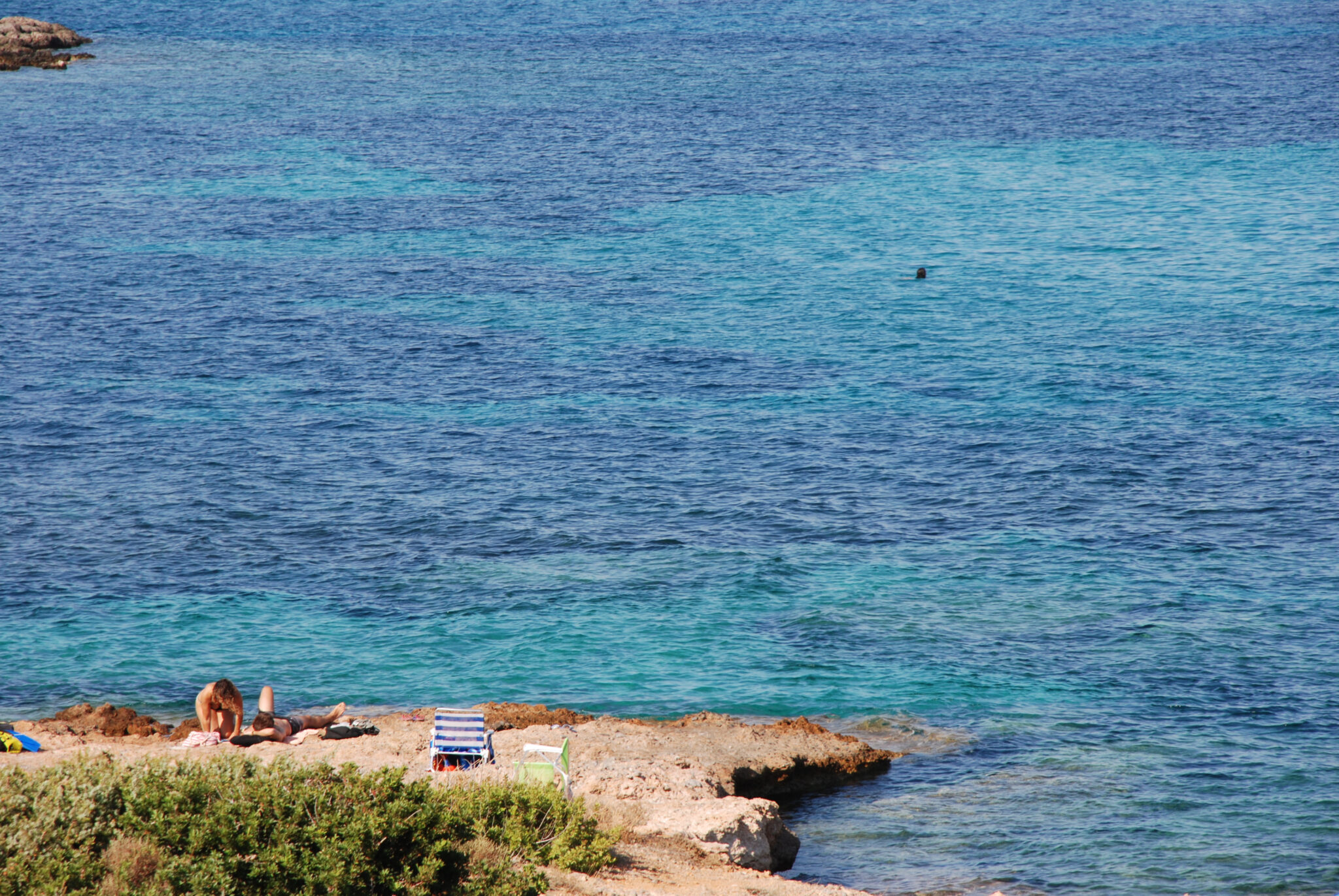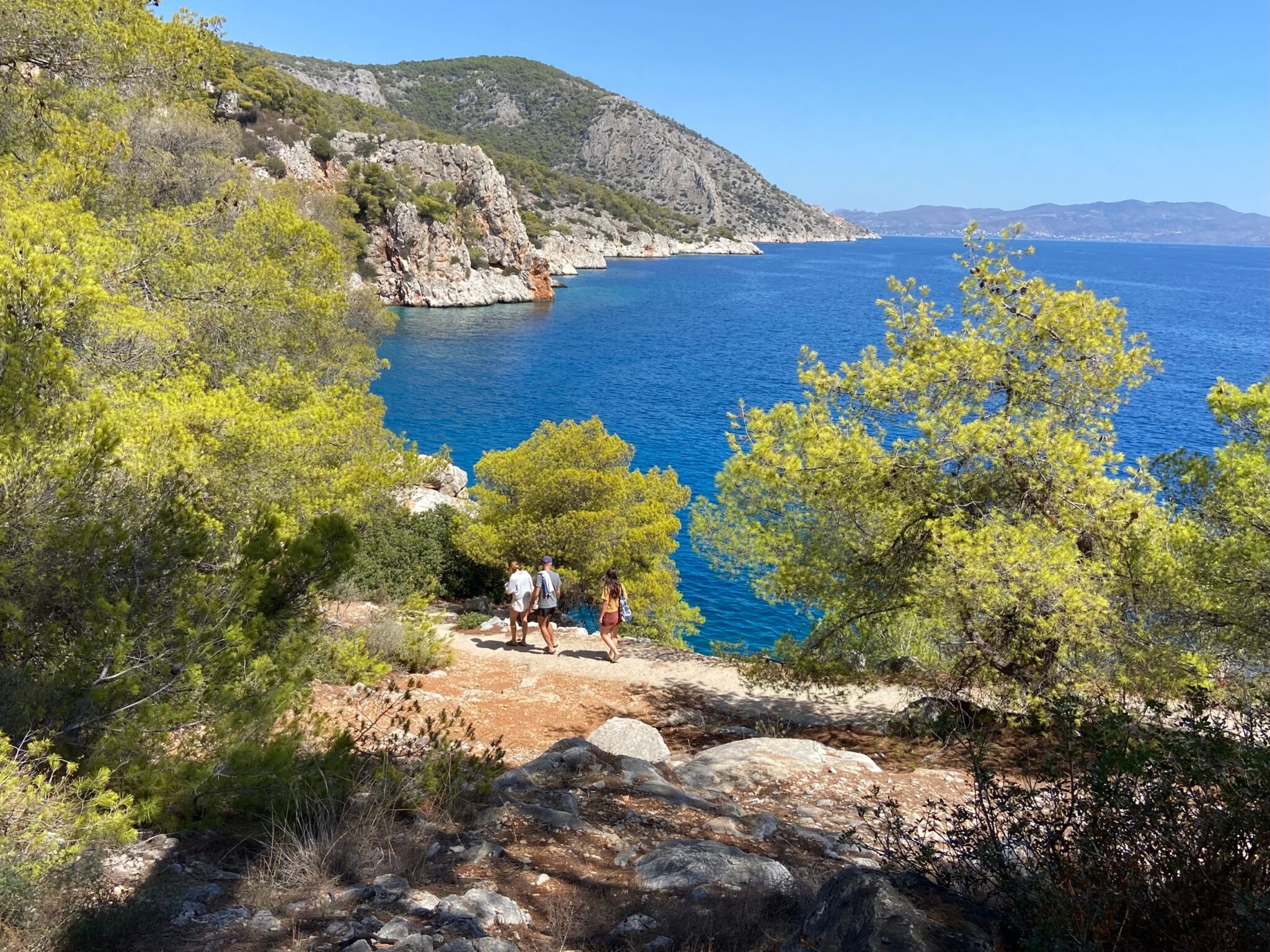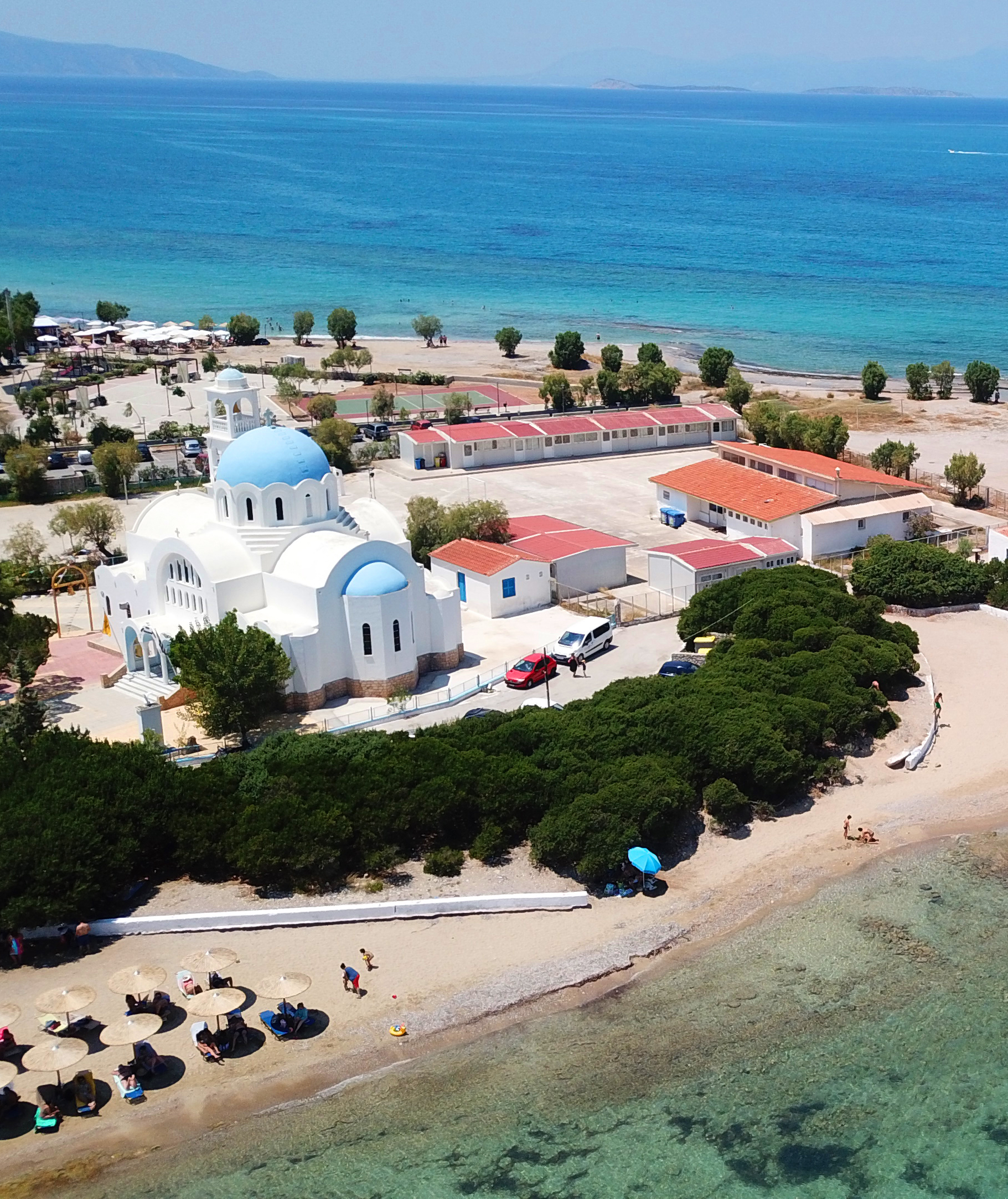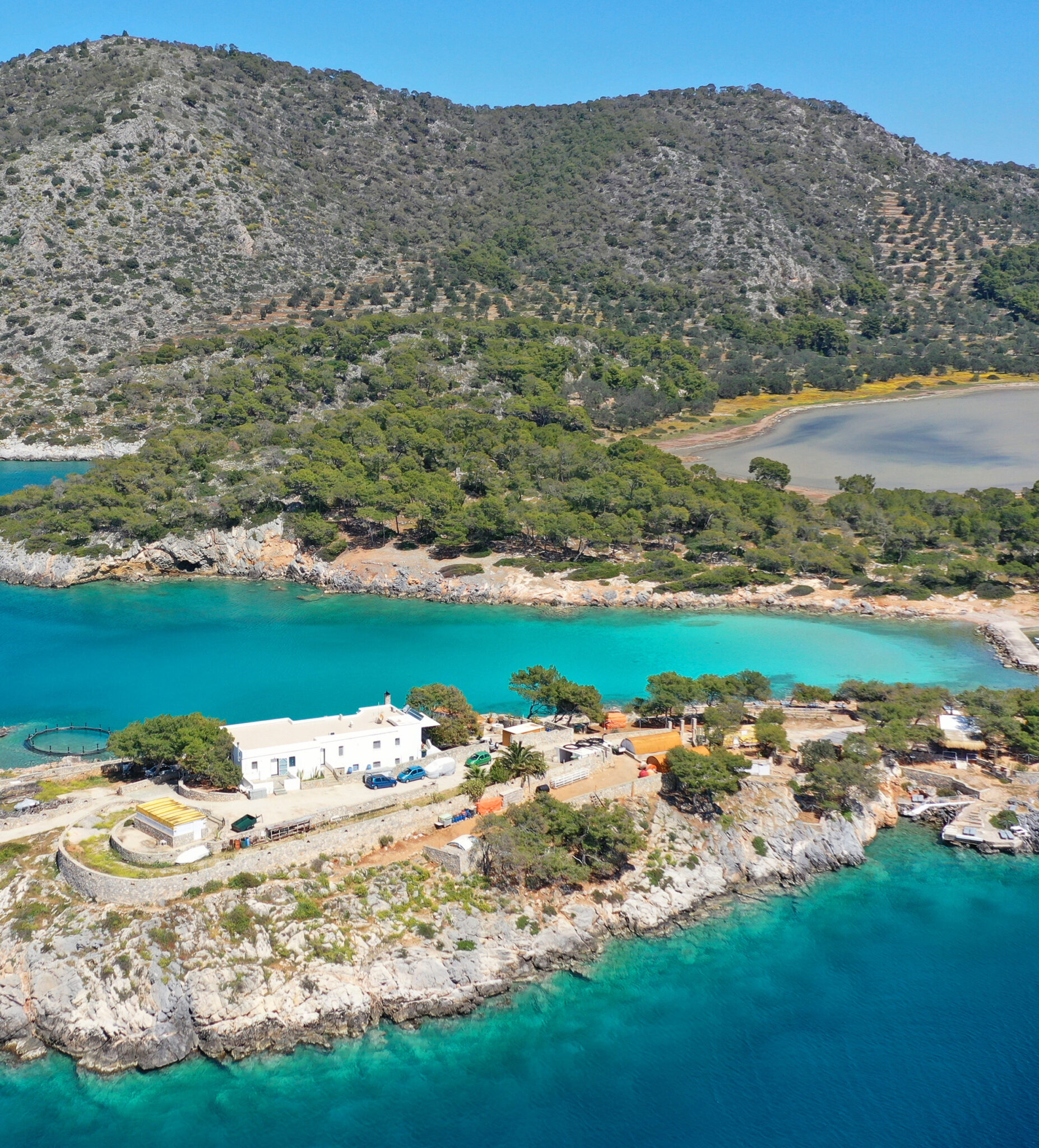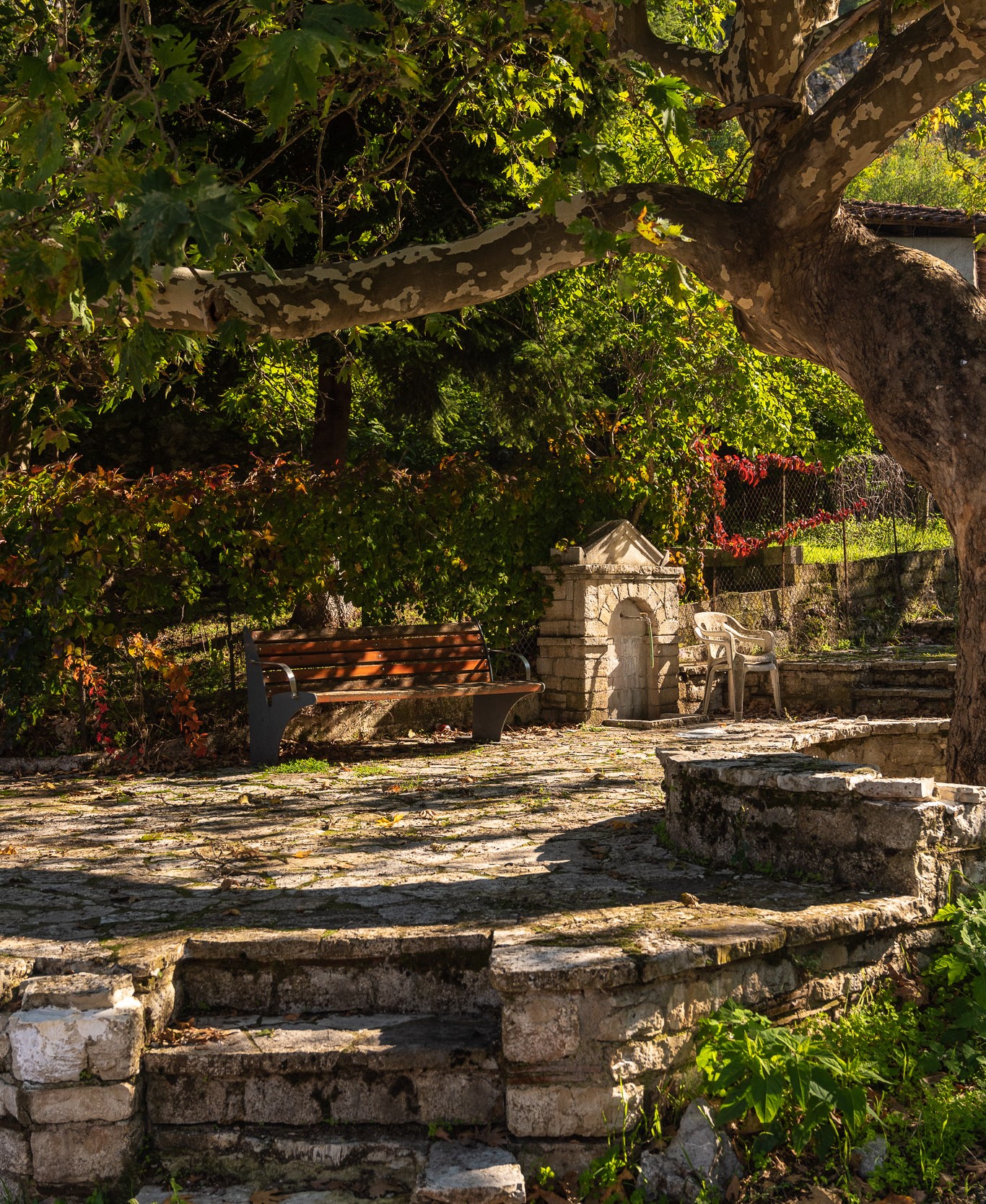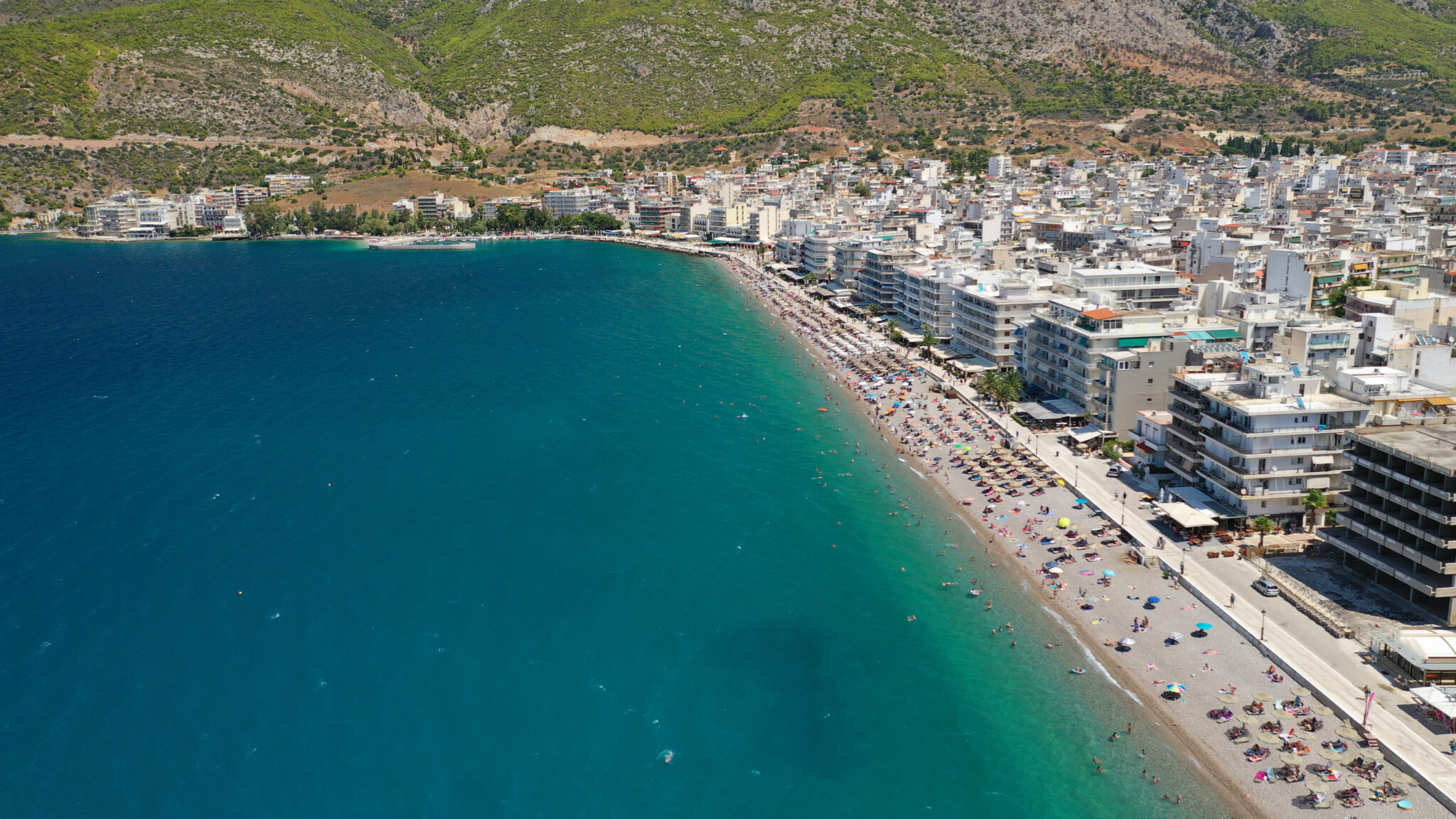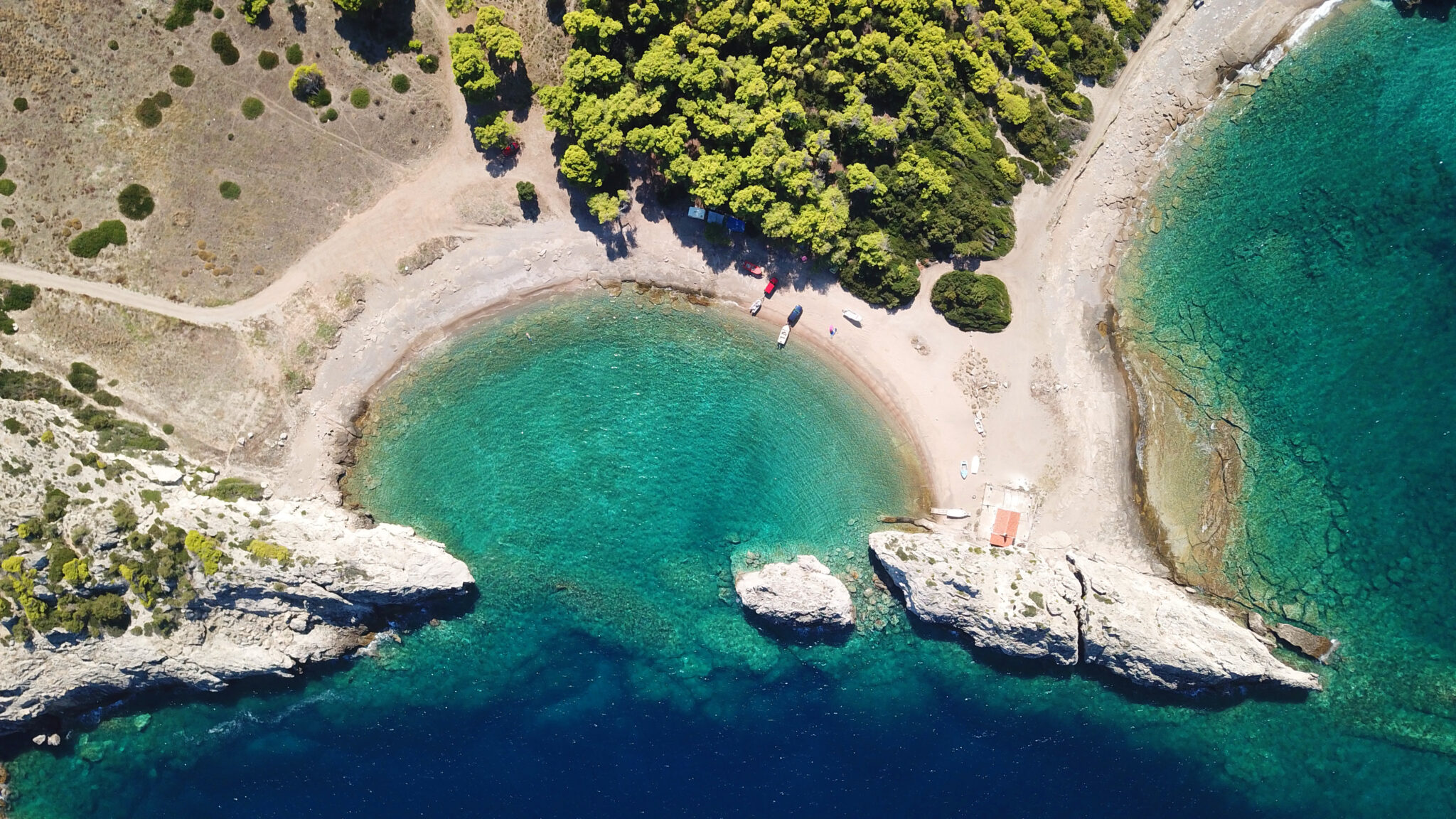One of the greatest pleasures of being in Athens is that you can make the most of all the wonderful things the capital has to offer but also enjoy it as a base for day trips that land you in entirely different worlds. Within one to three hours, you can hop onto a bus, boat or car and reach magnificent destinations, each with its fascinating history, culture and nature.
Here we present the best places to visit near Athens for an enriching day of exploration, heart-opening views and memorable activities. All of the places listed here are wonderful for longer visits too, with accommodations and restaurants that will keep you busy and satisfied for at least a few days.
01
Aegina
Aegina radiates breezy sophistication and is a place of millennia-old historic depth that has slowly but surely become a hub for a creative, open-minded Greek-international community. Elegant neoclassical homes and lively markets line the harbor, as well as cafes and tavernas. Aegina’s landscape is dotted with pistachio groves, which shape local culture.
Why Go? Visit the impressive Temple of Aphaia, wander through Paleochora’s quiet medieval ruins, or seek serenity at Saint Nektarios Monastery. The waterfront, with cafés and seafood restaurants, invites hours of relaxation in good company. Don’t Miss: The island’s famed pistachio products – especially the salted pistachio ice cream. How to Get There: Regular ferries from Piraeus port (around one hour).
02
Agoriani
Densely surrounded by fir trees, Agoriani, on the northwestern side of Mt Parnassus has a rural charm because of its glorious nature, especially enjoyable during the cooler months of the year. Traditional stone buildings color its rustic beauty, and local taverns and cafes offer a sense of social warmth.
Why Go? Hike gentle forest paths, unwind by picturesque waterfalls, and taste mountain specialties like nettle croquettes at tavernas offering warm hospitality. Don’t Miss: Savoring a freshly made wild greens pie. How to Get There: About two hours by car from Athens.
03
Amfiklia
Amfiklia blends mountain tradition with relaxed village life at the northern foot of Mt Parnassus’ foothills. Its charming streets, traditional stone architecture, and scenic views make it inviting for leisurely visits.
Why Go? Visit the Artos Museum showcasing local bread-making traditions, enjoy skiing or hiking around Parnassos, and dine in tavernas serving authentic Greek dishes. Don’t Miss: The unique Artos Museum experience. How to Get There: A two-hour scenic drive from Athens.
04
Lake Beletsi
Lake Beletsi is a quiet, natural retreat near Athens, surrounded by pine forests on the eastern slopes of Mt Parnitha. An artificial lake with wonderful flora and fauna teeming around it, it offers tranquil surroundings ideal for leisurely visits and relaxation.
Why Go? Take relaxing strolls, cycle through wooded trails, or picnic beside the serene waters. Nearby Sfendali village offers local cuisine. Don’t Miss: Relaxing picnic afternoons by the lake. How to Get There: Approximately 45 minutes from Athens by car.
05
Halkida
Halkida welcomes visitors to a world of rich historical heritage and modern energy. Set by the Euripus Strait, the city is characterized by its intriguing tidal currents and a lively waterfront lined with lively cafés and seafood spots.
Why Go? Walk across the sliding Old Bridge, visit Karababas Fortress for stunning views, and explore ancient discoveries at Halkida’s Archaeological Museum. Waterfront dining completes the experience. Don’t Miss: The unusual tides at the Evripus Channel. How to Get There: Around an hour from Athens by car or train.
06
Delphi
Delphi remains legendarily captivating with its mystical heritage and scenic mountain setting. Once home to the famed Oracle Pythia, visited for advice by the movers and shakers of the ancient world, this UNESCO-listed site offers fascinating glimpses into ancient Greek mythology and Greek nature at once.
Why Go? Tour the ancient Temple of Apollo, the iconic Athena Pronaia sanctuary, and the acclaimed Delphi Museum. Nearby Arachova buzzes with a café, food and cocktail culture ideal for relaxation. Don’t Miss: Admiring the remarkable Tholos at Athena Pronaia. How to Get There: Roughly two hours’ drive from Athens.
07
Goura
Goura is an authentic mountain village imbued by quiet, unassuming architectural charisma and lush surroundings. Stone buildings, picturesque streets, and life lived at a relaxed tempo comforts those seeking peace away from crowds.
Why Go? Hiking scenic trails around beautiful Lake Doxa, enjoying lush forest views, and indulging in local specialties at cozy village tavernas. Don’t Miss: Hikes at Lake Doxa. How to Get There: A two-hour drive from Athens.
08
Hydra
Chic, artsy Hydra is a feast for the eyes with elegant mansions lining quiet, vehicle-free roads and steep paths leading to astonishing sea views. Its historic maritime wealth and lively art scene now translates into a sophisticated contemporary culture.
Why Go? Explore winding streets leading to mesmerizing views or visit venues centered around history, music, and film, as well as art hosted by the DESTE Foundation, dive into the sea at Hydronetta, and browse chic boutiques. Relax at a waterfront taverna or cafe ideal for a sunset aperitif. Don’t Miss: the Cathedral of the Assumption of the Virgin Mary, also known as Panagia Faneromeni, next to the harborfront Clock Tower. How to Get There: Ferry journey of approximately two hours from Piraeus.
09
Loutraki
Loutraki is a popular destination known for its hot springs, which combines therapeutic wellness traditions with coastal fun and magnificent historical relics. Long admired for its curative waters and drawing in crowds for decades with its casino, the town now combines relaxed seaside living with exploration opportunities.
Why Go? Relax in soothing thermal spas, discover ancient Heraion sanctuary ruins, and explore scenic trails in Gerania Mountains. The seaside promenade offers vibrant tavernas serving fresh local seafood. Don’t Miss: The Heraion Sanctuary seaside ruins. How to Get There: One-hour drive from Athens.
10
Poros
Poros has a low-key, elegant, traditional and somewhat Bohemian spirit, which is why it attracts visitors and residents who love art and especially literature as much as nature, calm and community. Its neoclassical architecture and tranquil waterfront atmosphere call for pausing time and chilling out with no pressure to be glamorous.
Why Go? Explore the Archaeological Museum, the Russian Naval Base ruins, and peaceful Zoodohou Pigis Monastery. Enjoy leisurely meals at waterfront restaurants serving local dishes. Don’t Miss: Sunset at the Clocktower and evening drinks at the harbor. How to Get There: By ferry from Piraeus (around one hour)or a two-and-a-half-hour drive to Galatas port and then a 10 minute crossover by boat.
11
Skala Oropou
Skala Oropou is a modernized town from where you can easily drive to magical archaeological spots, beaches and pretty landscapes.
Why Go? To walk through the marvelous Amphiareion sanctuary, to observe the colorful birdlife in nearby wetlands, and visit the Phaethon Technology Museum. Relax with leisurely harbor walks. Don’t Miss: The Amphiareon archaeological site, once a healing center that still has some wonderfully preserved ruins. How to Get There: About 50 minutes from Athens by car.
12
Spetses
Spetses elegantly combines historical depth with modern allure. Its charming main town, Dapia, is a place of graceful neoclassical architecture and the majestic Poseidonion Grand Hotel. With a rich maritime heritage, the island was a strong player in the Greek War of Independence, the history of which is presented at the Spetses Museum in Hatzigiannis Mexis’ mansion and the fascinating home-turned-museum honoring the 1821 revolutionary heroine Laskarina Bouboulina.
Why Go? To traipse happily along Dapia’s bustling harbor lined with stylish boutiques, cafés, and seafood tavernas. The Old Harbour, a short walk or romantic carriage ride away, offers picturesque views and more upscale and scenic dining options. Hidden beaches as much as yacht-filled marinas create a sense of excitement. Don’t Miss: Visiting the historic mansion museum of Laskarina Bouboulina. How to Get There: Two-hour ferry from Piraeus.
13
Tolo, Mycenae & Epidaurus
Tolo is a scenic seaside village combining historical depth and relaxing coastal charm. Its beaches, including Kastraki, Plaka (Drepano Beach), and Vivari, offer diverse experiences, from quiet bays to vibrant shores with welcoming tavernas.
Why Go? To have a great time at the beach, savor fresh seafood and local Greek dishes in charming beachfront eateries and easily explore nearby archaeological treasures. Discover the ancient city of Asini, visit the legendary Mycenae, home to famous Bronze Age ruins, and experience performances at the magnificently preserved ancient theatre of Epidaurus, with its perfect acoustics. Don’t Miss: Exploring the atmospheric ruins of Mycenae. How to Get There: Two-hour drive from Athens.
14
Nafplio
Nafplio enchants visitors through its Venetian elegance, layered history, and lively ambiance. As the inaugural capital of independent Greece, its diverse historical influences manifest distinctly in refined architecture and imposing fortresses that command sweeping views over the sea.
Why Go? Stroll the historic Old Town’s winding streets, visit imposing fortresses like Palamidi and the island fortress of Bourtzi, and enjoy cafes, restaurants, and boutique shops. Nearby archaeological sites, such as Tiryns, Argos, and Nemea, offer deeper insight into Greece’s ancient past. Don’t Miss: Climbing Palamidi Fortress for panoramic views of the town and sea. How to Get There: Approximately a two-hour drive from Athens.
15
Vravrona
Vravrona combines historical intrigue with natural beauty, located conveniently close to Athens. Its centerpiece, the 5th-century BC Temple of Artemis, reflects the area’s significant religious past, accompanied by a museum displaying detailed insights into ancient life through art and everyday objects.
Why Go? Explore the archaeological site and nearby museum, observe diverse bird species in the vibrant wetlands, swim at Hamolia or visit nearby historical landmarks like the medieval Frankish Tower and the Cave Koutouki, famous for its impressive geological formations. Don’t Miss: Exploring the fascinating ruins of the Temple of Artemis. How to Get There: Less than an hour’s drive east from Athens.
16
Angistri
Angistri is perfect for travelers seeking unpretentious people and picturesque beauty aplenty. Smaller and less crowded than its Argosaronic neighbors Aegina, Hydra and Spetses, Angistri’s pine-covered hills and clear turquoise waters create a refreshing atmosphere for relaxation.
Why Go? Swim at pristine beaches like Chalikiada and Dragonera, explore charming villages (rent a bike locally if you’re in the mood for action) such as Megalochori and Skala, or enjoy scenic hikes through lush forests. Traditional tavernas offer delightful local seafood and traditional dishes. Don’t Miss: Experiencing a tranquil sunset swim at Chalikiada Beach. How to Get There: A short ferry ride from Piraeus, approximately 1 to 1.5 hours.



